
Tokyo (����, Tōkyō) is Japan's capital and the world's most populous metropolis. It is also one of Japan's 47 prefectures , consisting of 23 central city wards and multiple cities, towns and villages west of the city center. The Izu and Ogasawara Islands are also part of Tokyo.
Prior to 1868, Tokyo was known as Edo. Previously a small castle town , Edo became Japan's political center in 1603 when Tokugawa Ieyasu established his feudal government there. A few decades later, Edo had grown into one of the world's largest cities. With the Meiji Restoration of 1868, the emperor and capital moved from Kyoto to Edo, which was renamed Tokyo ("Eastern Capital"). Large parts of Tokyo were destroyed in the Great Kanto Earthquake of 1923 and the air raids of 1945.
Today, Tokyo offers a seemingly unlimited choice of shopping , entertainment, culture and dining to its visitors. The city's history can be appreciated in districts such as Asakusa and in many excellent museums , historic temples and gardens . Contrary to common perception, Tokyo also offers a number of attractive green spaces in the city center and within relatively short train rides at its outskirts.

Top attractions in Tokyo
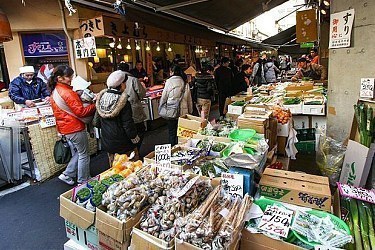
Tsukiji Outer Market •
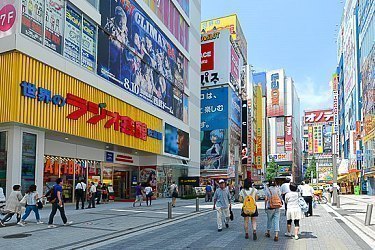
Akihabara •
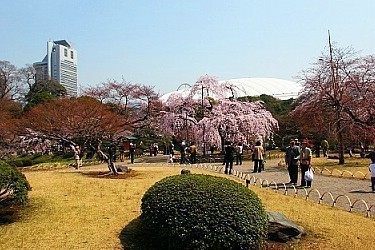
Koishikawa Korakuen •
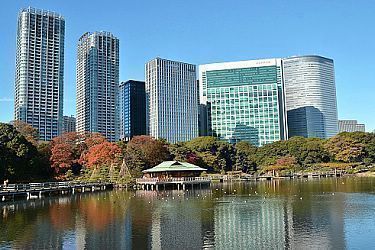
Hama Rikyu •
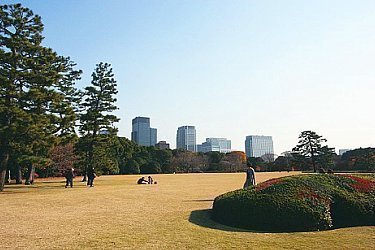
Imperial East Gardens •
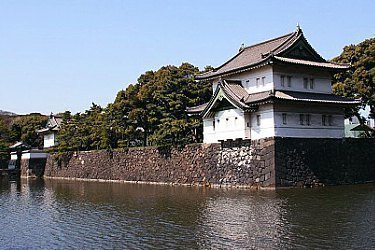
Imperial Palace •
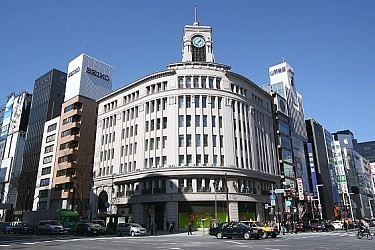
Ginza •
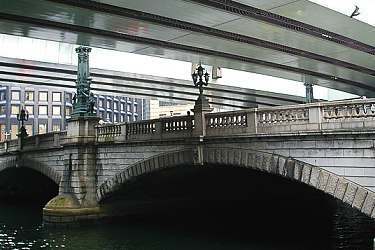
Nihonbashi •
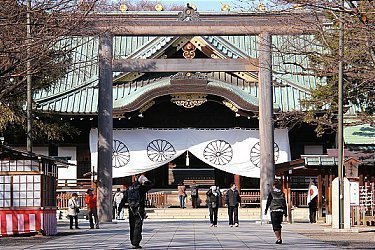
Yasukuni Shrine
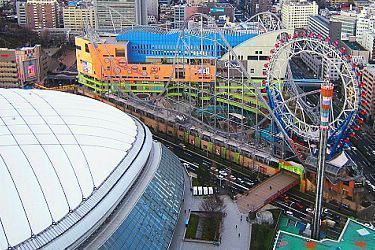
Tokyo Dome City
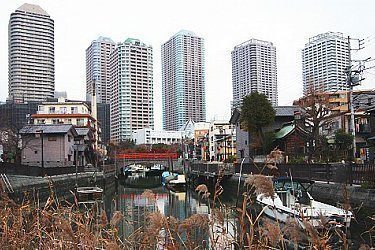
State Guest House
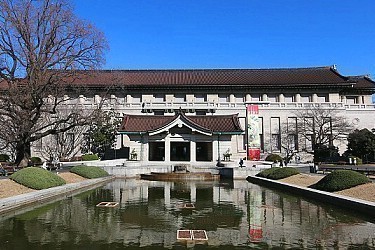
Tokyo National Museum ••
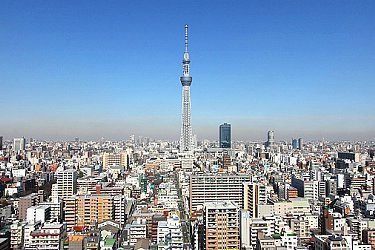
Tokyo Skytree ••
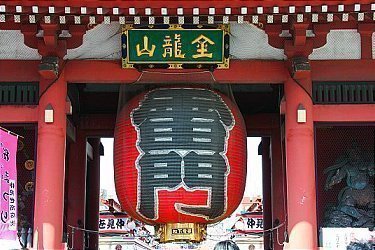
Asakusa •
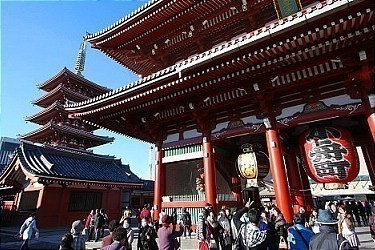
Sensoji Temple •
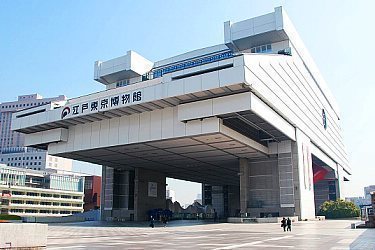
Edo-Tokyo Museum •
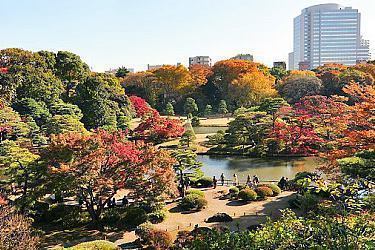
Rikugien •
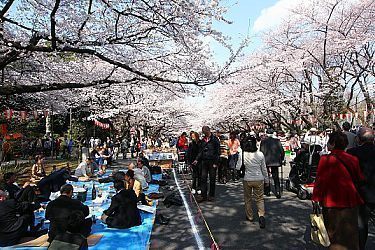
Ueno Park •
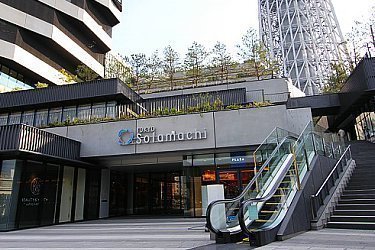
Tokyo Solamachi •
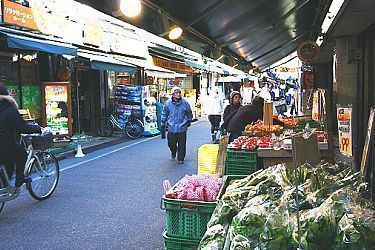
Botanical Garden
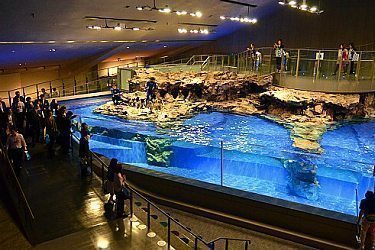
Sumida Aquarium
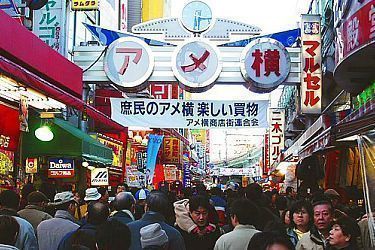
Sumida Hokusai Museum
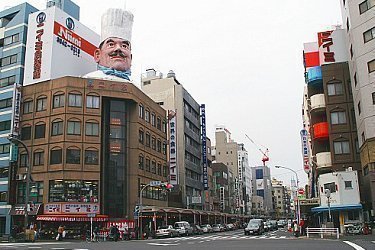
Kappabashi Street
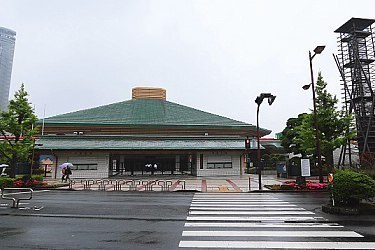
Shibuya ••
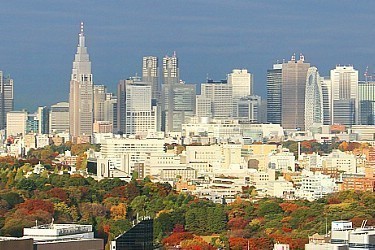
Shinjuku ••
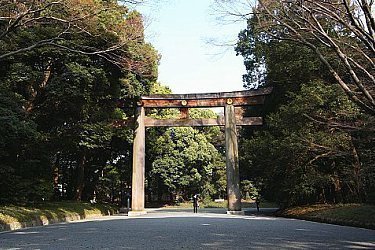
Meiji Shrine •
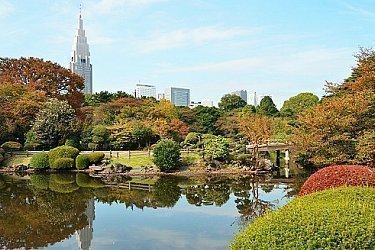
Shinjuku Gyoen •
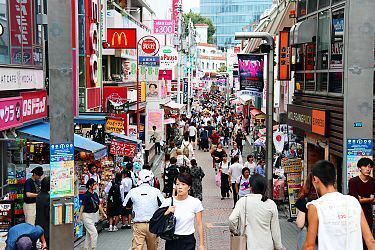
Harajuku •
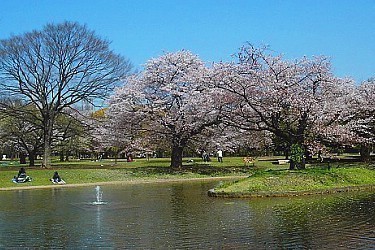
Yoyogi Park
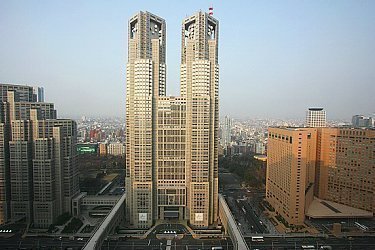
Government Building
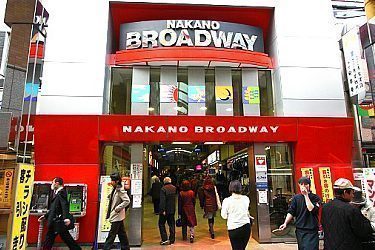
Nakano Broadway
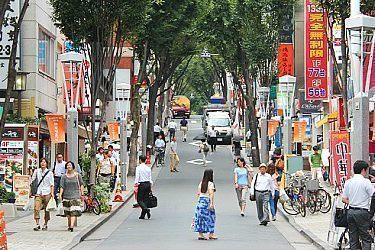
Yebisu Garden Place
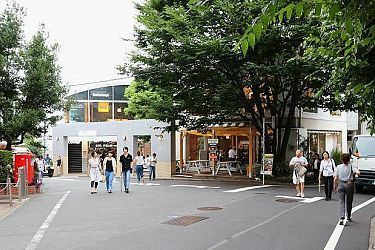
Odaiba •
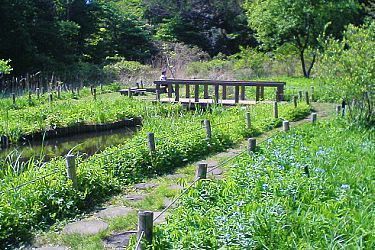
Institute for Nature •
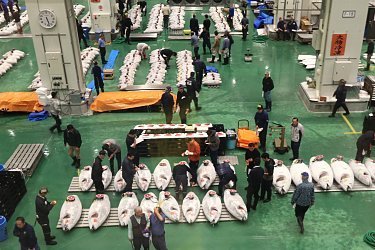
Toyosu Market •
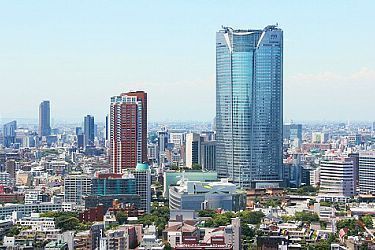
Roppongi Hills •
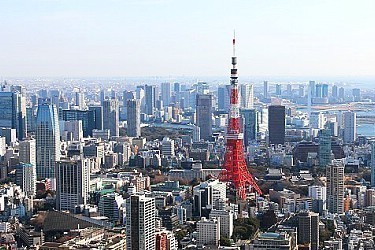
Tokyo Tower
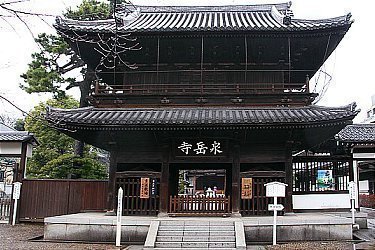
Sengakuji Temple
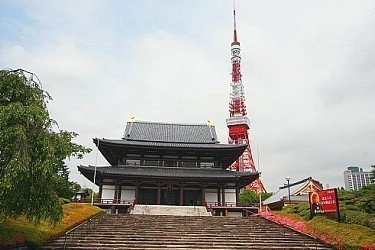
Zojoji Temple
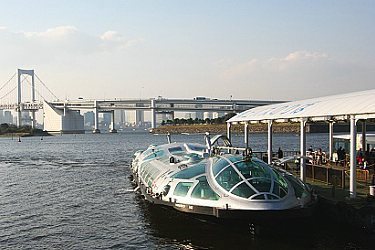
Tokyo Water Bus
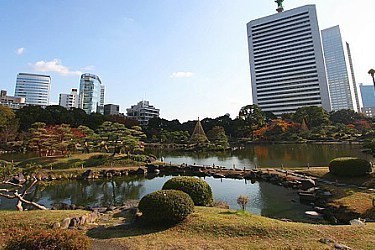
Kyu Shiba Rikyu
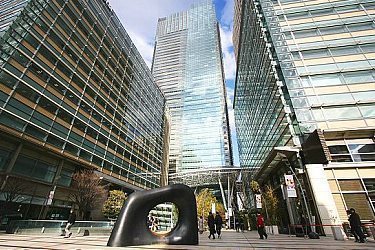
Tokyo Midtown
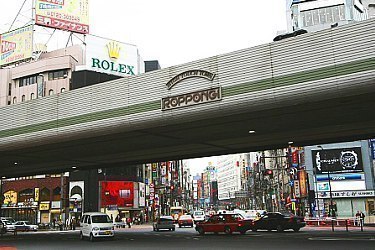
Akasaka Sacas
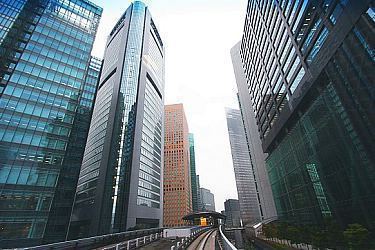
Tokyo DisneySea ••
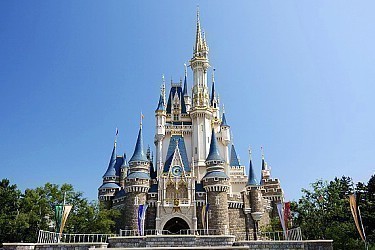
Tokyo Disneyland ••
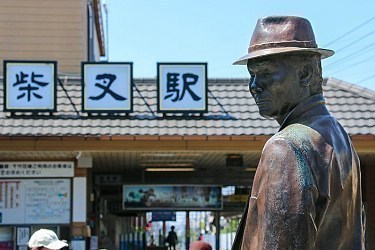
Shibamata •
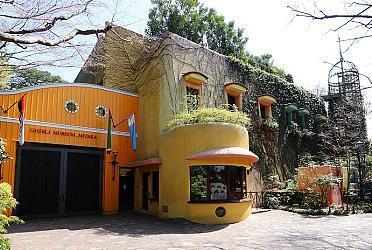
Ghibli Museum •
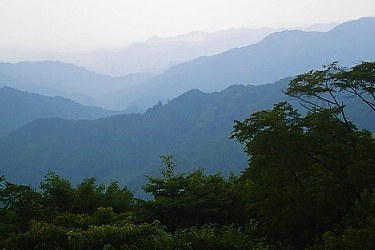
Mount Mitake •
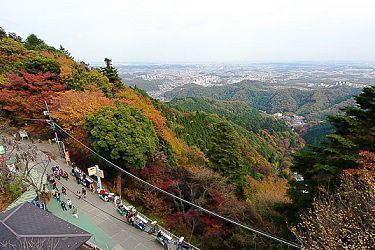
Takaosan •
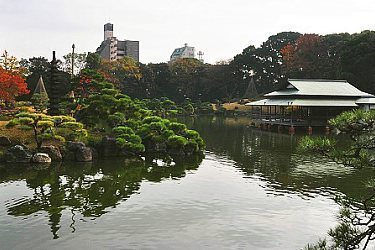
Kiyosumi Garden
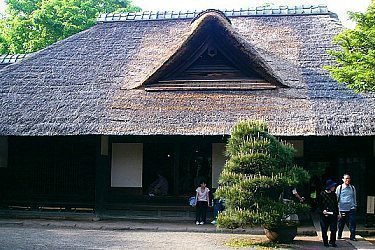
Edo Open Air Museum
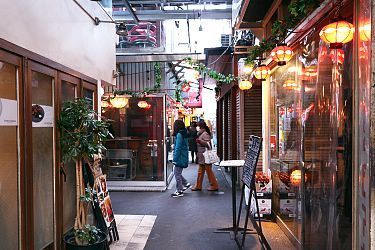
Showa Memorial Park
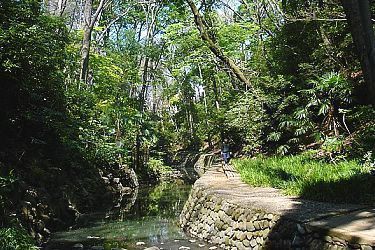
Todoroki Valley
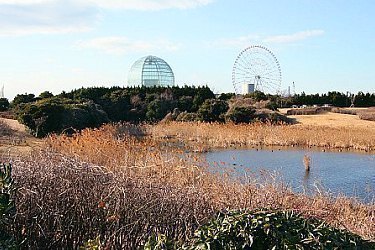
Kasai Rinkai Koen
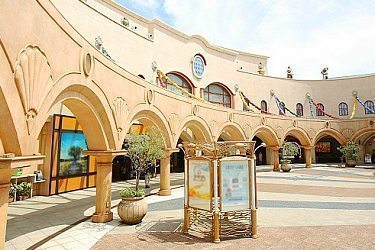
Ikspiari Mall
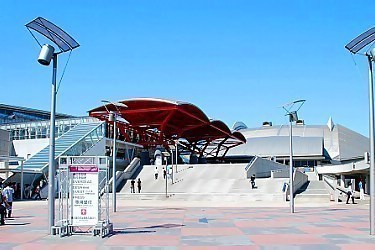
Makuhari Messe
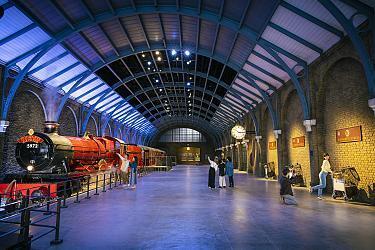
The Making of Harry Potter
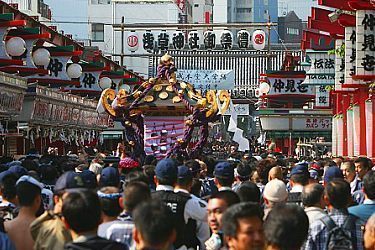
Sanja Matsuri •
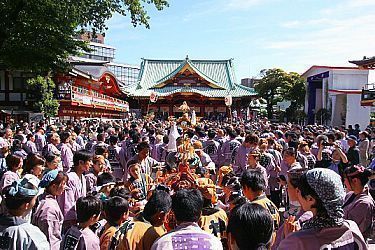
Kanda Matsuri •
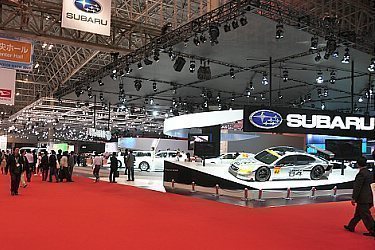
Japan Mobility Show •
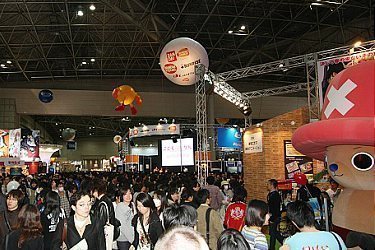
Tokyo Game Show
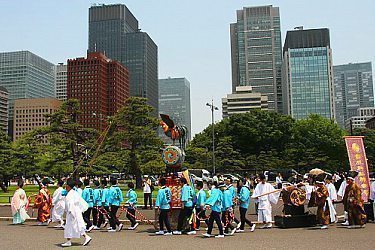
Sanno Matsuri
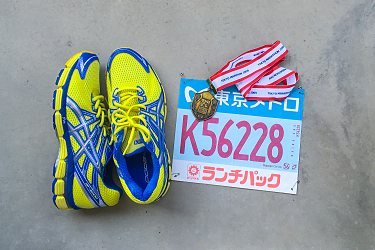
Tokyo Marathon
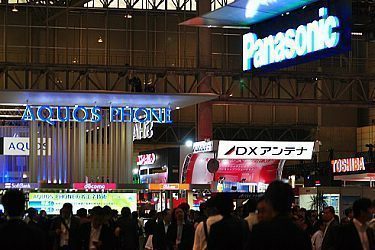
Ceatec Japan
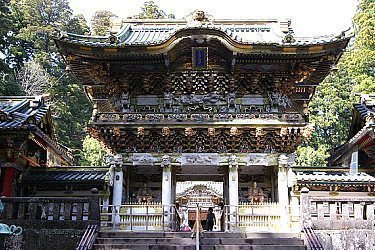
Nikko •••
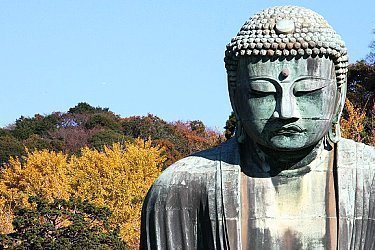
Kamakura ••
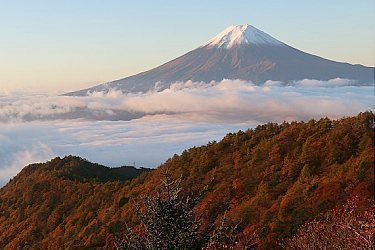
Fuji Five Lakes •
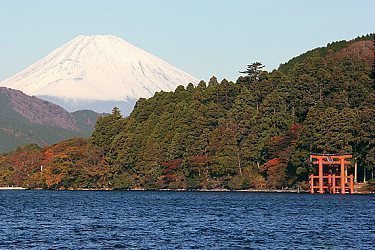
Hakone •
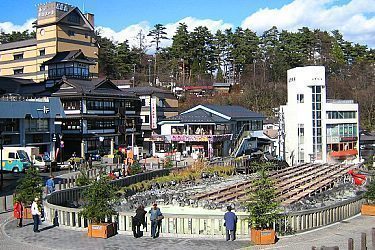
Kusatsu Onsen •
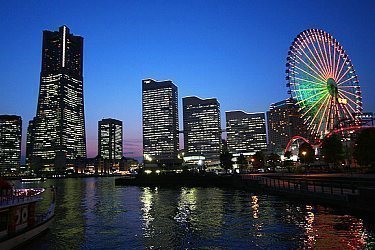
Yokohama •
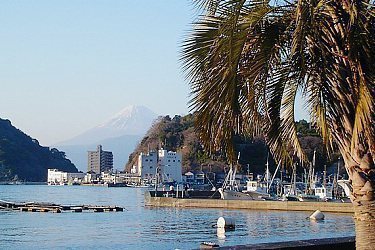
Izu Peninsula •
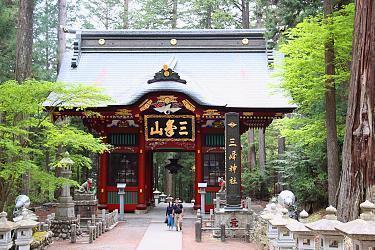
Ikaho Onsen
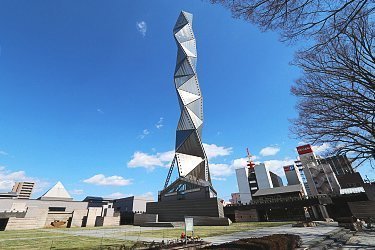
Tokyo by interest

Getting there and around
Itinerary ideas.
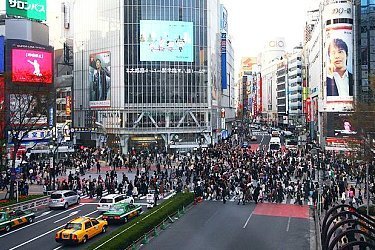
- Tranquil Meiji Shrine
- Urban exploring in Shibuya
- Shopping in Shinjuku and youth culture in Harajuku
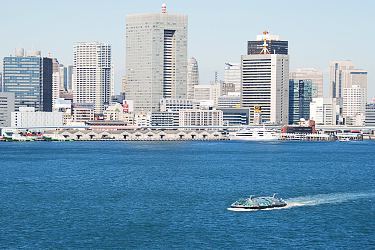
- Ancient Sensoji Temple
- Cruise down the Sumida River
- Shopping in modern Odaiba
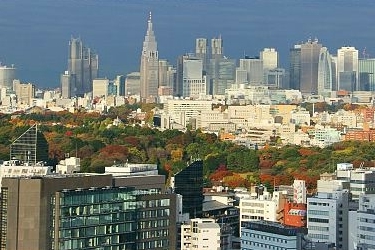
- Exploring Shinjuku's busy streets
- Relaxing in Shinjuku Gyoen
- Taking in the skyscraper district
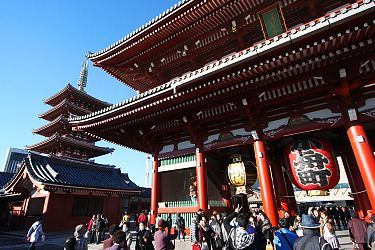
- Exploring Asakusa area
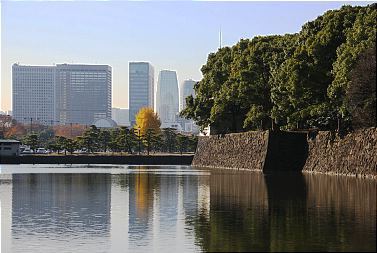
- Serene Imperial East Gardens
- Lively Ginza shopping district
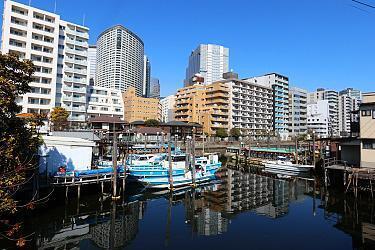
- Old-fashioned post town
- Artsy Tennozu Isle
- Waterfront walk
Questions? Ask in our forum .
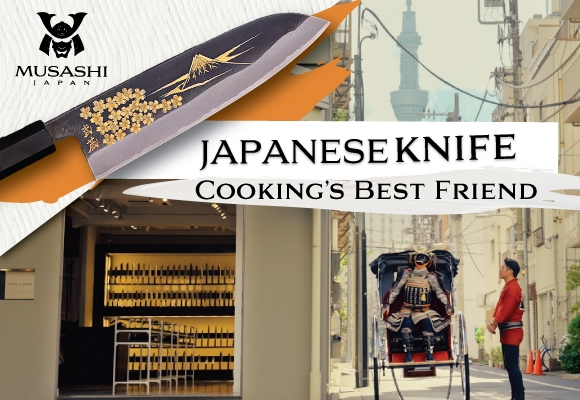
Links and Resources
Tokyo metropolitan government, hotels around tokyo, tokyo hotel guide.
How to choose the best places to stay in Tokyo
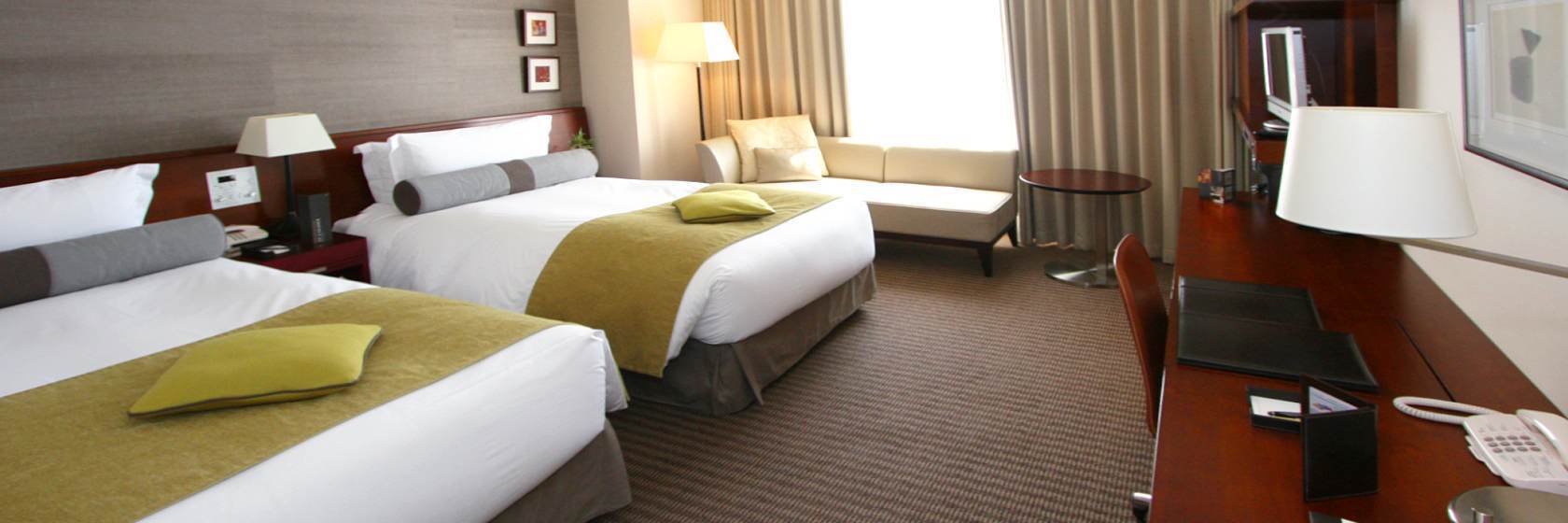
Experiences around Tokyo

- Tours & Experiences
- Tailor-made Trips
- Bahasa Indonesia
We are happy to see you again!
Continue with
Or use email.
No Account? Create one
Create account
Already have an account? Sign in
Quickly Sign up with
I agree to Japan Travel's Terms of Service and Privacy Policy . Terms of--> and acknowledge that Japan Travel's Privacy--> applies to me.-->
Email reset password link
Please check your inbox and click the link we will send to you.

Tradition meets modern in Japan's capital
Top attractions in tokyo.
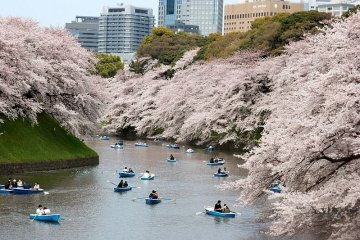
Chidorigafuchi

Art Aquarium Museum
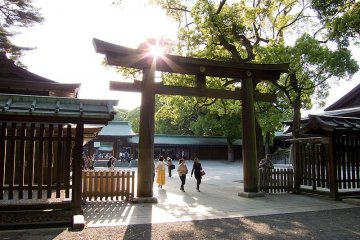
Meiji Jingu Shrine
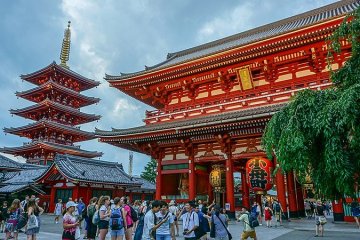
Sensoji Temple
Around tokyo.
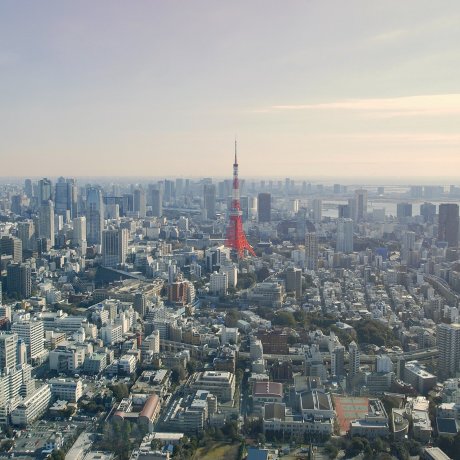
Laden with embassies and packed full of international and cosmopolitan leanings, Minato City, or Minato-ku, is one of Tokyo's 23 special wards. With its shrines, parks, museums and landmarks,..

Known as the Champs-Élysées of Tokyo, Omotesando’s tree-lined streets are filled with beautiful shops, funky cafes and great restaurants. It is also the gateway to the entrance to the Meiji..

Just a stop away from Shinjuku, Nakano is a quiet neighborhood best known for Nakano Broadway, a mall lined with current and vintage shops selling anime merchandise — most notably from secondhand..
About Tokyo
Tokyo (東京, Tōkyō) is the nation’s capital, the site of the 2020 Summer Olympics and the most populous city in the world – there’s no shortage of places to see and things to do in Tokyo. While that means you’ll inevitably have to leave some things off your itinerary, it also means that there’s something for everyone.
Tokyo’s center, the 23 wards, combine some of the world’s busiest areas with remnants of old Japan; not far from Shibuya is the holy Meiji Jingu , while the 634-meter tall Tokyo Skytree and the iconic Senso-ji in Asakusa are within walking distance of each other. Shinjuku and Roppongi are two vibrant nightlife spots, yet they’re a short train ride away from Ueno Zoo and the Tsukiji Fish Market .
Right in the middle of it all is the Imperial Palace , a popular jogging route. Beautiful nature in the Okutama area and the Izu and Ogasawara Islands will make you forget that you’re still in Tokyo.
- Theme Parks around Tokyo
- Viewpoints in Tokyo
- Tokyo Cherry Blossom Spots
Tokyo Top 10
- Recommended

Tokyo Trending with TripAdvisor for 2024

Retro Arcade Gaming at Akihabara’s RETRO:G

3-Day Exploration of Kozushima

Art Meets History at Sannomaru Shozokan

Discovering Cinnamoroll in Shinagawa City

2-Day Hachijojima Retreat: Recharge Your Mind and Body

CARNIVAL TOKYO

A Day in Shinagawa, Tokyo

Asakusa Shutter Art

Extraordinary Experiences in the Great Nature of Izu-Oshima, the Closest Island From Central Tokyo

Your Name: Real-Life Locations in Tokyo

Hachiko Statue in Shibuya

Shibuya Crossing

Kirby Cafe Tokyo

Kill Bill Inspiration at Gonpachi

Sanja Matsuri

Shirohige's Cream Puff Factory

Tokyo Sakura Garden Spring Festival

What is a Japanese Head Spa?

Upcoming Tokyo Events

Nakizumo Crying Baby Festival 2024
Nakizumo Crying Baby Festival 2019 in Asakusa's Senso-ji, an unusual but popular festival among parents where babies, carried..

The Japan Hobby Show 2024
Browse for finished products, shop for materials for your own hobby, watch the artists at work, or try your hand at something new...
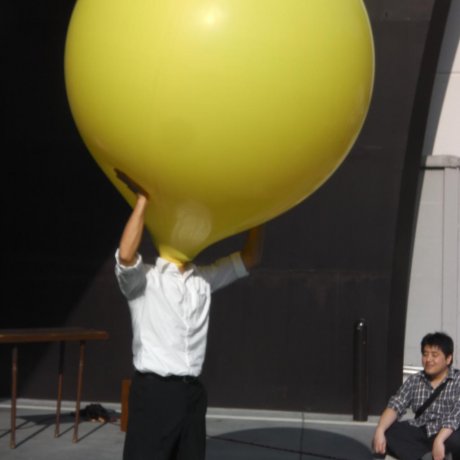
Koenji Street Performer Festival 2024
The annual Koenji Street Performer Festival is held in Koenji, Tokyo. Talented buskers come to perform magic, comedy, acrobatics,..
Where to eat in Tokyo
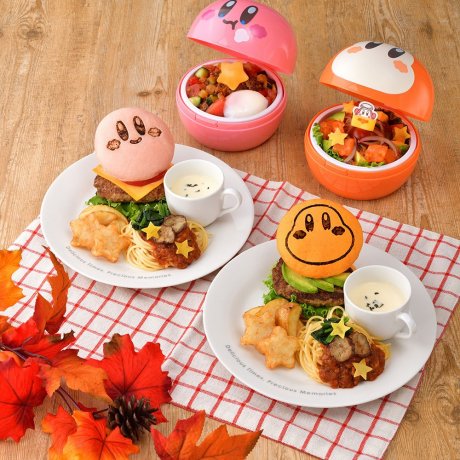
This new permanent cafe is located on the 4th floor of Solamachi, Tokyo Skytree, and is sure to bring a smile to any Kirby fan.

Gonpachi, the restaurant made famous by Quentin Tarantino in his 2004 film Kill Bill, serves delicious Japanese food to locals and..

Looking for the cutest cream puffs in town? Look no further! Shiro-Hige's Cream Puff Factory is the place for all you Studio..
Places to stay in Tokyo
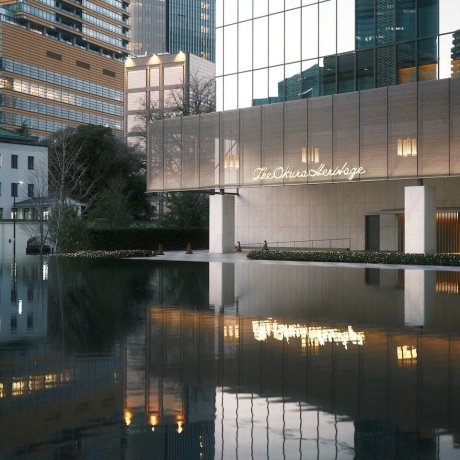
The Okura Tokyo
The Okura Tokyo is a beautiful modern hotel in quiet Toranomon. It has a retro feel but is modern in amenities and with excellent...

MUJI HOTEL GINZA & Global Flagship Store
MUJI GINZA occupies a new 10-storey building that houses the iconic brand’s global flagship store, MUJI HOTEL, restaurants and..
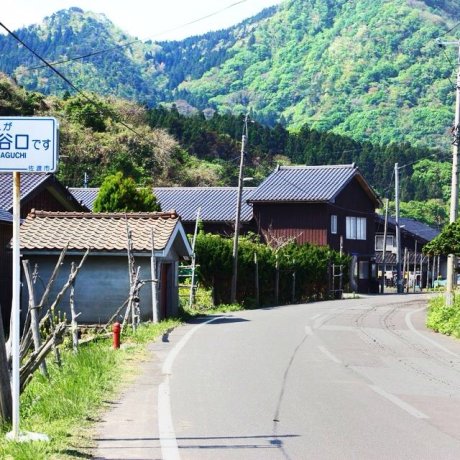
Couchsurfing in Japan
Japan's reputation as an expensive destination to visit can be off-putting, so Couchsurfing is the ideal option for advent..
Latest Tokyo Reports
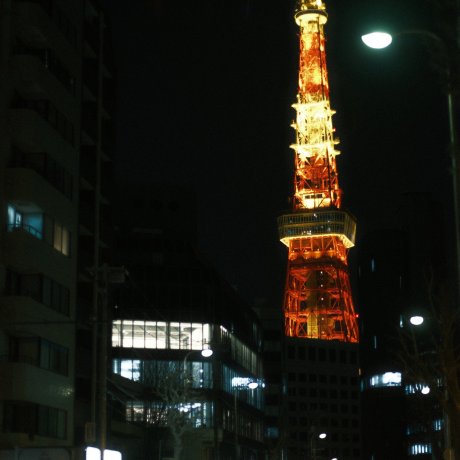
Night Walking in Azabudai Hills
Walking around Azabudai Hills in the evening is a fun way to view the stunning new architecture. Minato is full of beautiful illuminated..

M&C Cafe, Marunouchi
M&C Cafe is a yoshoku restaurant in Marunouchi. The beef hayashi rice is hearty and delicious.
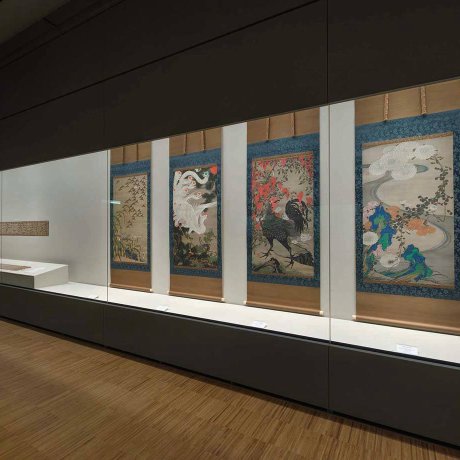
The Museum of the Imperial Collections, Sannomaru Shozokan reopened in November 2023 after construction work was completed. The..
Let us know how we can help.
36 Hours in Tokyo
By Motoko Rich Updated April 6, 2023
- Share full article

For two and a half years, pandemic border controls kept international travelers out of Tokyo, leaving its neon shopping precincts and most popular temples and shrines to the locals. Now, with foreign tourists welcomed back since October, those willing to explore beyond highly trafficked neighborhoods like Harajuku, Shibuya and Shinjuku and wander down side streets in places like Setagaya or Koto will be richly rewarded with offbeat boutiques, cafes or surprising oases of natural beauty. Think of Tokyo as a warren of concealed gems, where you can drink at an artisanal bar tucked up in a small office or apartment building or taste exquisite sushi in a basement at the end of a dark street.
Recommendations
- Todoroki Ravine Park , Tokyo’s only natural valley, is a place to clear your head and experience beautiful bamboo groves up close without leaving the city.
- Gotokuji Temple is a peaceful Buddhist temple surrounded by thousands of maneki-neko, the waving cat figures that are one of Japan’s most popular symbols of good luck.
- Kappa Bashi offers a long street of kitchenware shops. Save room in your suitcase for ceramic rice bowls, sake cups, chopsticks and knives.
- The Oshio Tempura and Wine Bar serves unorthodox tempura, with wine pairings, in an old train viaduct.
- Unafuji is a Tokyo outpost of a Nagoya restaurant that specializes in charcoal-grilled eel.
- No. is a mellow bar with a Japanese-Nordic vibe serving specialized cocktails on the third floor of an apartment building.
- Lakan-ka serves fresh and light small dishes and teas infused with monk fruit.
- Toraya-An Stand is a cafe serving sweet bean paste buns and light salads in the trendy Aoyama neighborhood.
- Sushiya-Ono is the place for a blowout omakase sushi meal with exquisitely cut fresh fish served by the chef at a seven-seat counter.
- Ramen Kamuro serves ramen noodles in chicken-based broth in a casual diner setting.
- Bar Martha is a place to listen to vintage vinyl while you drink Japanese whiskey or cocktails. Warning: You could get shushed for talking.
- Iki Roastery & Eatery serves quiche, pastries and espresso drinks in an industrial space on the banks of the Sumida River.
- Dover Street Market is where to shop Japan’s top designer clothing brands, including A Bathing Ape and Commes Des Garcons.
- Ginza Akebono sells delicate Japanese traditional confectionery sweets like the signature strawberry and azuki bean paste wrapped in mochi.
- Tideway sells Japanese-made leather bags and wallets.
- Mizuno Dye Factory offers a mix of indigo tie-dyed clothing and accessories.
- Sou Sou is the Tokyo branch of a Kyoto-based textile company that brings a classical kimono sensibility to contemporary styles.
- Watari-um is a small museum and gallery exhibiting modern and contemporary artists.
- Taro Okamoto Memorial Museum celebrates the art of the late Japanese abstract painter and sculptor in the studio where he worked in the Aoyama neighborhood.
- Kiyosu Bashi is a Western-style suspension bridge that spans the Sumida River in eastern Tokyo.
- Kiyosumi Gardens is a natural oasis in an old industrial neighborhood where you can see turtles and ducks and carp among trees and blossoms.
- Aoyama Grand Hotel , on a busy intersection in Kita-Aoyama, an area near Tokyo’s high-end Omotesando district, has elegant rooms furnished in midcentury-modern style. Doubles start from about 47,200 yen a night, or about $360.
- Trunk Hotel , a boutique hotel in Jingumae, is as popular with locals for its bar and restaurant as it is with out-of-town travelers looking for minimalist rooms in a trendy neighborhood. Double rooms start from about 44,300 yen a night.
- All Day Place Hotel is on a quiet corner near a main thoroughfare in bustling Shibuya, with a pizza joint and the About Life Coffee Brewers on the ground floor; smooth lattes and outdoor seating make for a good place to rest before plunging back into the city. Doubles start from about 21,400 yen.
- For short-term rentals , search in the Aoyama, Shibuya, Shinjuku and Yoyogi areas, which are centrally located and near good transport connections.
- Tokyo is best navigated on its world-class subway , train and bus systems. Cabs , while plentiful, are expensive. Ride-hailing apps are not as commonly used as elsewhere, but JapanTaxi and Uber are available. Google Maps is the best navigation app to use here.

More From 36 Hours
Have a weekend to explore a destination we’ve got the perfect travel itinerary..
Paris: A different side of the French capital reveals smaller museums, under-the-radar spots in Montmartre and a diverse performance scene .
Montreal : Climb a mountain, wander the waterfront and enjoy a smoked-meat sandwich in a city with a surprise around every corner.
Cartagena: With a limonada de coco in hand, explore two walkable neighborhoods over a weekend in this coastal Colombian city.
Glasgow: Take in Gothic architecture, green riverside walks and a global banquet in Scotland’s largest city.
Chicago: Cycle miles of urban trails, tour a restored Frank Lloyd Wright masterwork and catch golden hour along Lake Michigan.
Advertisement
Tokyo Travel Guide

Best Times To Visit Tokyo
The best time to visit Tokyo is between March and April and September and November. Autumn ushers in colorful foliage and comfortable temperatures. Spring brings in much of the same, but instead of vibrant fall hues, the foliage you'll see here are cherry blossom trees in full bloom, making it peak tourist season. Summer, on the other hand, is oppressively hot, but less crowded than the spring. What's more, parts of June and July can usher in lots of rainy days. On the opposite extreme, winter weather is chilly (with highs in the 50s and 60s and lows in the mid-30s), but still manageable; however, you will not be able to experience the full potential of Tokyo's parks at this time of year.
Weather in Tokyo
Data sourced from the National Climatic Data Center
Find Flight and Hotel Deals
Navigate forward to interact with the calendar and select a date. Press the question mark key to get the keyboard shortcuts for changing dates.
Navigate backward to interact with the calendar and select a date. Press the question mark key to get the keyboard shortcuts for changing dates.
Popular Times to Visit Tokyo
Tourism volume is estimated based on in-market destination search query interest from Google and on travel.usnews.com in 2015-2016. Hotel prices are sourced from a sample of U.S. News Best Hotels rates through 2015-2016.
Explore More of Tokyo

Things To Do

Best Hotels

You might also like

# 2 in Best Places to Visit in Japan

# 12 in Best Places to Visit in September 2024
If you make a purchase from our site, we may earn a commission. This does not affect the quality or independence of our editorial content.
Recommended
The 18 Best Napa Valley Wineries to Visit in 2024
Lyn Mettler|Sharael Kolberg April 23, 2024

The 25 Best Beaches on the East Coast for 2024
Timothy J. Forster|Sharael Kolberg April 19, 2024

The 50 Best Hotels in the USA 2024
Christina Maggitas February 6, 2024

The 32 Most Famous Landmarks in the World
Gwen Pratesi|Timothy J. Forster February 1, 2024

9 Top All-Inclusive Resorts in Florida for 2024
Gwen Pratesi|Amanda Norcross January 5, 2024

24 Top All-Inclusive Resorts in the U.S. for 2024
Erin Evans January 4, 2024

26 Top Adults-Only All-Inclusive Resorts for 2024
Zach Watson December 28, 2023

Solo Vacations: The 36 Best Places to Travel Alone in 2024
Lyn Mettler|Erin Vasta December 22, 2023

26 Cheap Beach Vacations for Travelers on a Budget
Kyle McCarthy|Sharael Kolberg December 4, 2023


The 50 Most Beautiful White Sand Beaches in the World
Holly Johnson December 1, 2023

A beginner’s guide to visiting Tokyo: Everything you need to eat, see and do

There's a reason everyone and their mother is going to visit Tokyo these days. It's one of the most incredible destinations on Earth, and I fell head over heels in love with this city on a recent trip.
When you go, you'll understand why.
Now, when I tell you I spent as much time planning my itinerary as I did putting together the TPG beginner's guide , it's not an exaggeration. I spent hours researching, calling, emailing — pretty much everything except sending a carrier pigeon to the other side of the world — to make sure I had the most incredible experience ever. And it paid off. Fortunately, I created this guide so you don't have to do the same before your first trip to Tokyo. Just do me a solid and enjoy every second of the trip, OK?
For more TPG news delivered each morning to your inbox, sign up for our daily newsletter .
Where to eat in Tokyo
If you know anything about me, you know that my life revolves around where I'm eating. Considering that Tokyo is one of the culinary capitals of the world, you can imagine how excited — and overwhelmed — I was before the trip. I reviewed everything from Instagram to Tabelog (Japan's version of Yelp), and then crosschecked online reviews to make sure these restaurants deserved to make the final cut.
Keep in mind that it can be difficult to make online restaurant reservations in Tokyo. There's no Resy or OpenTable to speak of. So, your best bet is using some type of concierge service from either your hotel or credit card (think: the Amex Platinum Concierge ).
Also, I think there's a misconception that you have to spend a lot of money to visit Tokyo. Yes, you can absolutely splurge on omakase and Wagyu (I'll get to that in a minute), but you can also find inexpensive street food or pop into a no-frills sushi, ramen or udon restaurant that'll make your wallet and stomach very happy. You can do Japan on a budget, and don't let anyone tell you otherwise.
Related: 3 ways to do Tokyo on points
Where to get sushi in Tokyo
First thing's first: I knew I needed to stuff my face with as much sushi as possible, and there was one restaurant I kept seeing pop up again and again: Sushi-Ya.
Sushi-Ya is an eight-seat omakase restaurant in the the Ginza district of Tokyo (right near the Conrad !) and was the most incredible sushi experience I've ever had. I mean, just look at this tuna:

Chef Ishiyama was warm and welcoming, and explained every piece I was going to eat during the two-hour ordeal. This was a real treat, since many sushi chefs don't speak English; it can be intimidating if you don't speak the language. It was far and away the most expensive meal I had in Japan, but worth every single penny yen.
That wasn't my only sushi journey, though. I was also able to get a reservation at Isana Sushi Bar, a slightly more casual sushi spot I kept seeing pop up during my research. Chef Junichi Onuki was another near-fluent English-speaking chef, and the fish here was high-quality without being too pricey. I ended up chatting with a family from California who was also visiting, and we got into a long conversation about — you guessed it — sushi. Chef Onuki chimed in, as well, and it made for a really memorable start to my trip.
Where to get noodles in Tokyo
Let's talk about ramen for a second. Of course, Tokyo is full to the brim with ramen shops, similar to (but better than) Ippudo locations all over the U.S. But the real treat here is tsukemen . It's a Japanese specialty where the cold noodles are served in a bowl separate from the warm broth. You dip the cold noodles in the broth and then you reach ramen Nirvana. It's all part of the experience. The best tsukemen I had was at Fuunji, followed closely by Rokurinsha on Ramen Street in Tokyo Station. You'll inevitably end up waiting in line for each for about an hour or so, but since it's Japan, everything is efficient and moves quickly.
Oh, and did I mention that you'll order using a vending machine?
I also knew I needed to dive into a bowl of udon, and Shin Udon seemed like the place to go (coincidentally, it was right around the corner from Fuunji). It was a few minutes away from the Park Hyatt in an unassuming little room. They even line people up on another street as to not block the tiny little entrance. If you're staying anywhere in Shinjuku — and even if you're not — add this to your list.
Related: Inside Tokyo's bizarre robot restaurant
The best restaurants in Tokyo
Now, you'll think I've lost my mind for what I'm about to tell you, but believe me when I say I ate the best pizza I've had in my life in Tokyo ; I'm a native New Yorker and have traveled multiple times to various cities around Italy, but the pizza at Seirinkan blew all the other slices out of the water. It was as close to perfect as you can get. I found this place through chef David Chang's "Ugly Delicious" show on Netflix , and he said the same thing: You'll think he's crazy, but it really is the best pizza in the world. If you don't believe me, go see for yourself. If you do believe me, well, bring your stretchy pants. I'd definitely recommend making a reservation, too. I got mine through the concierge at the Conrad hotel , and you can probably use a similar strategy, or call the Amex Platinum concierge.

If you thought my culinary extravaganza was over, you'd be wrong.
I kept seeing these delicious-looking wagyu beef sandwiches pop up on social media and knew I needed to taste one for myself. I ultimately landed on a shop called Wagyumafia and it did not disappoint. Granted, it was also probably the most expensive sandwich I have ever and will ever order (it cost about $30), but how can you say no to a fried wagyu sandwich? You can't.
You know you're in a good spot when everyone in the restaurant is Japanese. Enter: Tempura Kondo. This restaurant, tucked away on the fifth floor of a building in Ginza, turns out some of the best fried food I've ever had. Just follow the people getting in the elevator and you'll know you're in the right place. Those two Michelin stars aren't for nothing.
Fluffy pancakes are also a must in Japan, and trust me, I had more than my fair share. In Tokyo, I went to Bills Ginza and A Happy Pancake; I inhaled my pancakes in minutes. Of the two, I would choose Bills — the quality of the food was better, and the overall vibe of the restaurant was more relaxed and fun. Safe to say I stayed pretty carbohydrated during my trip.
And if you don't stock up on snacks (hello, matcha Kit Kats!) and a daily chicken katsu sandwich at 7/11 , Lawson or FamilyMart, you're doing it wrong.
Like I said: Tokyo is an eating extravaganza.
Related: 10 things no one tells you about Tokyo
What to see and do in Tokyo
You could spend your entire life in Tokyo and still never run out of things to see and do. It's just that massive. Assuming you're just visiting for a few days, however, and not relocating there, these are the things you should prioritize.
Yes, you keep seeing it on Instagram , but there's a reason: It's called teamLab Borderless, and it's cooler in real life than it is on your phone. I was skeptical about it at first, thinking it was just another "Instagram pop-up," but this interactive light museum and installation can take hours to properly explore. The most popular exhibit (see below) had a pretty long line — about 20 minutes or so — when I was there, but it was absolutely incredible.

You should definitely make it a point to visit the famed Tsukiji Market when in Tokyo. While the inner market — the place where the tuna auction took place — moved to Toyosu Market, you can still visit the outer market at Tsukiji to eat all the fish your heart desires without shelling out the big bucks. I had an oyster the size of my face for about $2; a giant octopus skewer; and a tuna, salmon and sea urchin situation that was unlike anything else I've ever eaten. All of this cost me less than $20.
Another favorite locale was Ameyoko Ueno market. Visiting markets while you're traveling is a great way to get a feel for the people and the culture, and at Ameyoko, you'll find cheap shopping, authentic cuisine and approachable residents who can introduce you to Tokyo.
No trip to Tokyo is complete without a quick trip to Shibuya Crossing, the busiest intersection in the world. The surrounding area has great shopping (Tower Records), so you definitely want to take a few minutes to cross the street and feel the heartbeat of the city. I've also heard the Starbucks at the corner has the best aerial views, but I didn't have time to make the trip there.
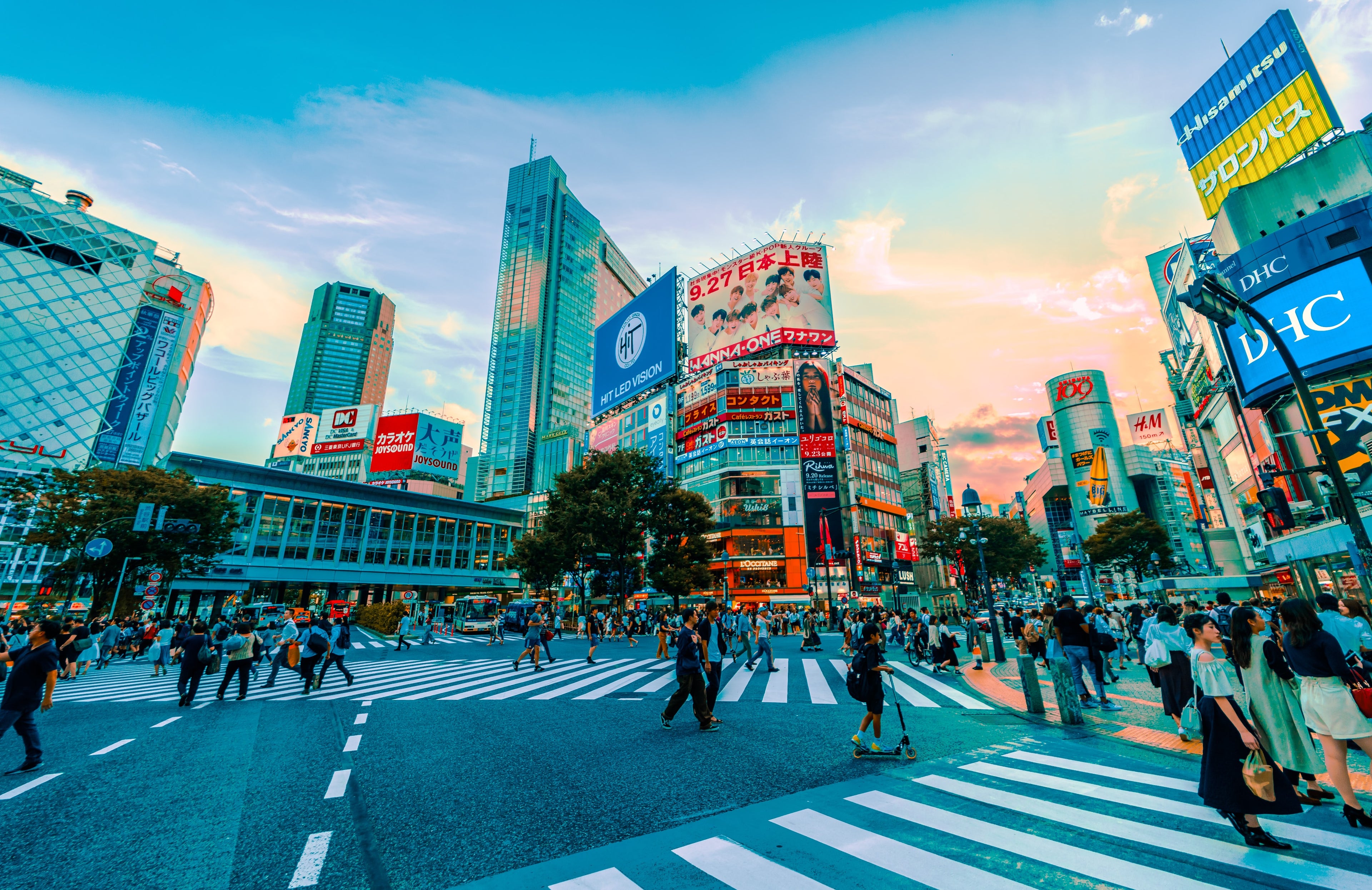
You'll also want to visit the Harajuku area, the center of Japanese youth culture and fashion. Take a walk down colorful Takeshita Street — just be prepared for a sensory overload in the best way possible. If you're a cotton candy fan, stop at Totti Candy Factory.
Steps away from Harajuku, you'll find Meiji Jingu, a beautiful Shinto shrine. It's dedicated to the spirits of Emperor Meiji and his wife, Empress Shōken. I'm not a religious person at all, but it was a deeply spiritual experience. I really liked writing down my wishes in an envelope and putting them away in a box. It all felt very "Eat, Pray, Love." The shrine is located in Yoyogi Park, which is a gorgeous, sprawling green park in the middle of Shibuya. I went early before the crowds, and it was the definition of Japanese Zen.
In Asakusa, you'll find Sensō-ji, a Buddhist temple and the oldest in Tokyo. Everything I'd ever dreamt about Japan came to life here. Be sure to bathe in some of the smoke from the incense, since it's said to have healing powers.
My favorite shopping was in Shinjuku. I kept seeing the name Komehyo pop up during my research, and decided to make a trip to the store's flagship in this neighborhood . I ended up getting a bag I've had my eye on for years, and it cost me less than half of what it would have cost at home. And thrift stores are a thing in Japan. They resemble actual department stores, and have enough luxury goods to make your head spin — and since it's Japan, everything is in pristine condition.
If you're even remotely a fan of the Grateful Dead, you need to visit Chi Chi's. It's a little off the beaten path in the Setagaya City neighborhood, but is a well-known destination for Deadheads. Chi Chi and Merry, the owners, were so warm and welcoming, and we ended up talking for an hour about music, travel, Japan and food. The best things in life, if you ask me. All the shirts are handmade, and you could easily spend an entire day there browsing and chatting with Chi Chi and Merry. Merry even let me take a picture with her signed copy of John Mayer's "The Search for Everything" album that she got back when Dead & Company went to visit the shop in April.
View this post on Instagram A post shared by CHI-CHI'S (@chichis_1985) on Jun 21, 2019 at 12:46am PDT
Where to stay in Tokyo
With so many hotels in Tokyo, it can be hard to narrow it all down. Trust me, I know the feeling.
I ended up staying in two hotels during my trip: Both the Conrad and Park Hyatt . While I'm more or less obsessed with the Conrad and can't recommend it highly enough, the Park Hyatt definitely fell below my expectations.

These are two of the city's most high-end points properties, but I promise there's something for everyone and every budget here.
Take, for example, the wealth of Marriott hotels in the city. There are two Courtyard properties — one in Ginza , the other near Tokyo station — both available from 35,000 points per night. There's also a Westin (rates start at 50,000 points per night) and, one step up from there, a Ritz-Carlton (rates start at 85,000 points per night).
And there are even more properties on the horizon as the capital prepares for the 2020 Summer Olympics. Marriott loyalists can look forward to a forthcoming Edition property; a spring grand opening is expected for the Kimpton Shinjuku for travelers with IHG points; and if you're more interested in earning than redeeming points, Japan's third Four Seasons will appear in time for the games at Tokyo at Otemachi.
You'll want to check out our guide to the best points hotels in Tokyo to find the one that works best for you.
Related: 3 of the best value points hotels in Tokyo
How to get to Tokyo
Naturally, there are a ton of ways to get to Tokyo — it's one of the biggest cities in the world, after all. There are two airports that serve the city: Haneda (HND) and Narita (NRT). Haneda is much closer to the city , but I ended up flying in and out of Narita because of how my flights worked out.
On the way there, I flew in Japan Airlines first class . I'll probably never be over the fact that I can say that and yes, it really was that amazing. I found award availability on Alaska Airlines for 70,000 miles and $18 in taxes and fees.
Coming home, I flew in Air Canada business class with a short layover in Montreal (YUL) — I transferred 75,000 Amex points to Aeroplan , paid about $175 in taxes and fees and voilá! That's how you do it, people.
The details
Getting around.
I'm a big fan of walking, especially in a city I haven't been to before so I can explore every corner.
That said, Tokyo is a massive 845 square miles. You'll inevitably have to take the subway, which is extremely efficient and clean — people wait on lines to get in and out of it. (Take notes, New York City.) I'd definitely recommend getting either a Pasmo or Suica card ahead of time and loading it with money so you don't have to buy individual tickets. Also, you'll need to swipe it (or your individual ticket) as you leave the station, so be sure to keep it accessible.
I loved putting on my headphones and listening to music while Google Maps was on in the background; it told me exactly when I needed to turn, and if I was taking the subway, when the train was leaving and what platform I needed to be at. Efficiency at its finest.
While I felt safe walking around at night, I opted to take a cab home from restaurants that weren't walking distance to my hotel — when traveling alone, I always err on the side of caution. That said, you'll be more than fine taking the subway with a companion, or even by yourself. I just always play it safe.
Uber is available here, although the fleet is fairly small and prices are typically more expensive than taxis. Taking a taxi in Tokyo is an experience — the drivers all wear white gloves, not to mention they open and close the door for you. Beats an Uber any day of the week.
To get to Kyoto, I took the scenic Shinkasen directly from Tokyo Station to Kyoto Station. I'd recommend getting to Tokyo Station early and going to Rokurinsha for ramen; you'll thank me later. The trip took less than three hours, and yes, the bullet train is as fast as you've heard. Added bonus: The ticket cost about $120 each way, and counted toward my Chase Sapphire Reserve $300 travel credit .
Related: Second cities: Destinations to add onto a trip to Tokyo
Japanese currency and tipping
In Japan, $1 gets you about 108.55 Japanese yen, so don't panic when you see astronomical numbers while scoping out prices. You'll also want to carry a decent amount of cash on you, since many places don't accept credit cards. Of course, when you do pay with card, you'll want to use one that doesn't charge foreign transaction fees . Just think of what you could be putting that money towards instead (read: food).
The service in Japan was absolutely incredible — I'd even venture to say it's pretty much the ideal location for a solo woman traveler . People (everyone, not just those working in hospitality) go out of their way to help you and make sure you're comfortable. Excellent service and hospitality is so ingrained in the culture that tipping is actually considered rude . Instead, just smile and say thank you.
Bottom line
In case you couldn't tell, I had the absolute best time in Tokyo , and am already itching to go back. There is so much to see and do here that it's difficult to even scratch the surface. But with these tips in mind, you'll begin to understand what the hype is all about — and if my past trip here is any indication, you're going to fall in love with this beautiful city, too.
Nomadic Matt's Travel Site
Travel Better, Cheaper, Longer
Tokyo Travel Guide
Last Updated: February 18, 2024
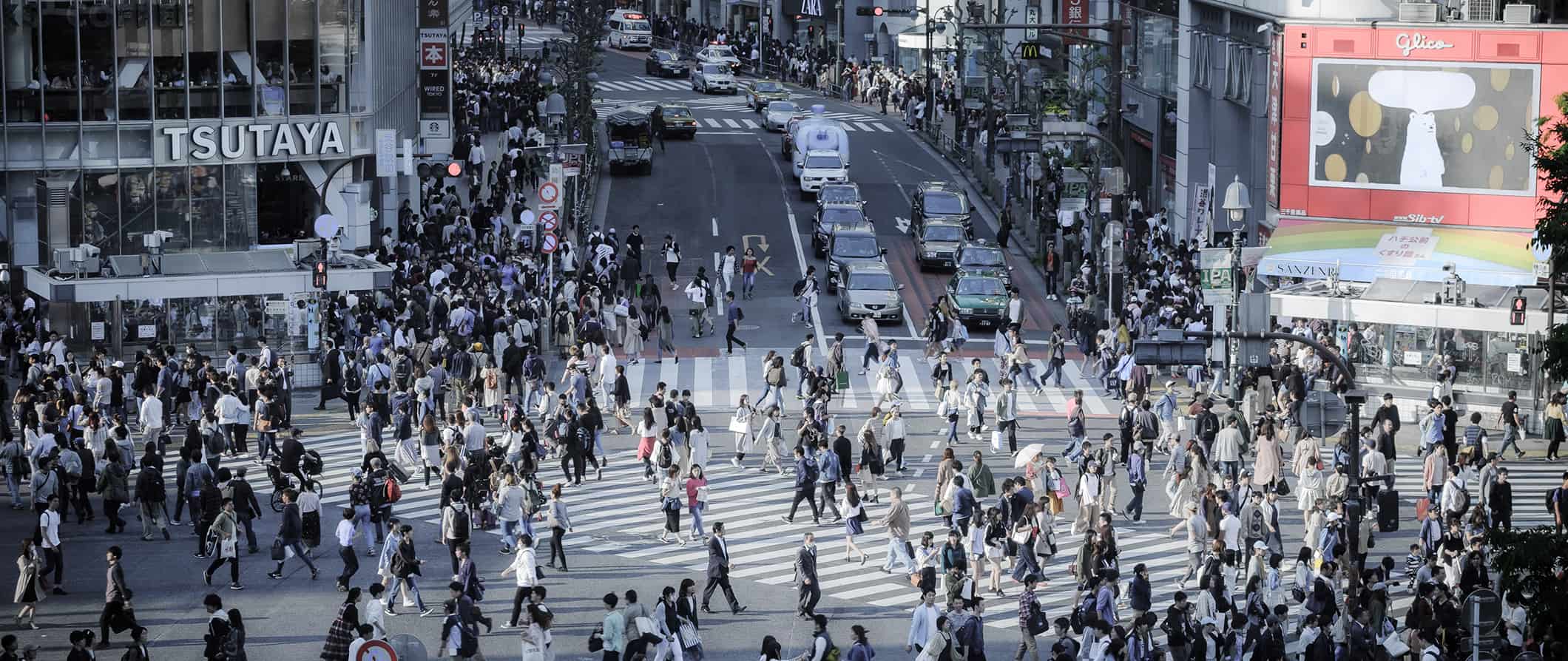
I love Tokyo. I think it is one of the most interesting cities in the world. I love that it’s a fast-paced, modern metropolis that still embraces its traditional roots. I love the orderly crowds when you expect chaos and the never-ending list of amazing things to see and do. I love the wild nightlife scene of the Japanese “salaryman” bars, cocktail bars, karaoke bars, nightclubs, and jazz venues.
Everyone falls in love with Tokyo. Seriously.
This travel guide to Tokyo can help you navigate on a budget, see the major sights, take part in its eclectic nightlife, and get off the beaten track a bit.
Table of Contents
- Things to See and Do
- Typical Costs
- Suggested Budget
- Money-Saving Tips
- Where to Stay
- How to Get Around
- How to Stay Safe
- Best Places to Book Your Trip
- Related Blogs on Tokyo
Top 5 Things to See and Do in Tokyo
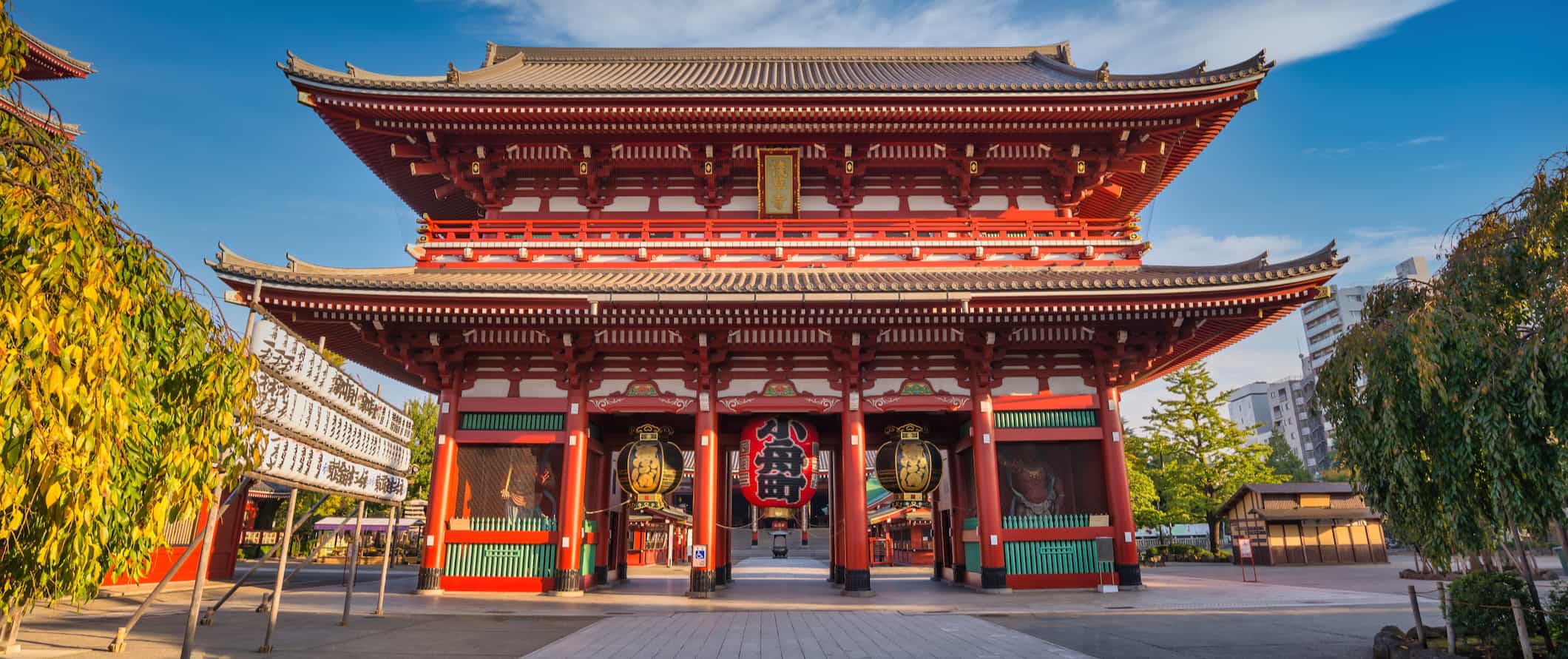
1. Admire Senso-ji Temple
The original Buddhist temple here was built in the seventh century. The current restored temple, just a quick walk from the Asakusa train station, is beautifully painted in rich reds and lives in an oasis of ancient structures nestled among modern skyscrapers, including a five-story pagoda and the famous Kaminarimon aka “Thunder Gate,” constructed in 941. There’s also a huge statue of Kannon, the goddess of mercy, inside the main hall, and other statues of ancient gods and goddesses, lanterns, and much more throughout the grounds, which are free to enter and open 24/7. The temple itself is open daily 6am–5pm (6:30am October-March). Get there early to avoid the crowds. On the weekends, you’ll want to get there by 8am.
2. Visit the Tokyo Tower
Built in 1957, this bright Eiffel Tower doppelgänger stands approximately 333 meters (1,092 feet) and is made entirely out of steel. It was Tokyo’s tallest structure until the Skytree was built in 2010 (where admission is 1,800 JPY when booked online ). You can pay to go up 250 meters (820 feet) to the top floor of the tower to take in expansive views of the city, though the main observation deck (150 meters or 492 feet up) offers views that are just as impressive. On a clear day, you can even see Mt. Fuji. Admission is 1,200 JPY for the main deck or 2,800 JPY to go to the top.
3. See the Tsukiji and Toyosu Fish Markets
Tsukiji Fish Market opened in 1935 and for decades was the most famous wholesale fish market in the world. In October 2018, it moved its wholesale (inner) market and fish auction to a new location in Toyosu and doubled in size, now including a fruit and vegetable section and rooftop garden.
If you want to experience the wholesale market auctions, head to Toyosu, where there are also endless fishmongers at rows upon rows of tables. However, you can no longer walk the floor unless on an organized tour, so it’s a little bit of a bland experience as otherwise you are just looking down from a viewing platform.
While the Tsukiji inner market moved, you can still visit the outer market, which has rows and rows of \ retail stalls, as well as tons of restaurants, and is still in its original spot. Here you can get a taste of what the market used to be like, while eating some incredible food and picking up souvenirs. Food and drink tours of the Tsukiji Outer Market are around 13,500 JPY.
Both markets are closed Sundays, holidays, and some Wednesdays. Some stalls at the outer market open as early as 5am, but the majority open around 6am. The place is really crowded by 9am, so get there as early as you can. It’s a great place to go if you wake up early from jet lag!
4. Admire the Imperial Palace
The Imperial Palace is the primary residence of the emperor of Japan. Built in the late 15th century as a feudal city-within-the-city and inhabited by various warrior clans, Edo Castle, as it was called through most of history, was renamed when the then-emperor moved Japan’s capital from Kyoto to Tokyo in 1869. While visitors aren’t permitted inside the palace and other buildings, the grounds are a peaceful place to wander. For access to limited areas of the grounds, book a free tour in advance on the Imperial Palace website.
5. Explore Ueno Park
Ueno Park is home to over a thousand cherry blossom trees as well as the Tokyo National Museum (admission is 1,000 JPY), both the oldest and largest art museum in Japan, with the world’s largest collection of art and artifacts from Asia. The park is also the site of Ueno Tosho-gu, a Shinto shrine for several shoguns (free, but it’s 500 JPY to visit the inner shrine); the National Museum of Nature and Science (630 JPY); the Tokyo Metropolitan Art Museum (admission varies by exhibition); the National Museum of Western Art (500 JPY); the Shitamachi Museum (300 JPY); and the Ueno Zoo (600 JPY), Japan’s oldest zoo, which has four hundred animal species. There are plenty of places to sit and relax or have a picnic. On weekends, you usually find some events or festivals here too.
Other Things to See and Do in Tokyo
1. watch a sumo match.
Ryogoku Kokugikan, Japan’s most famous sumo wrestling arena, hosts tournaments three times each year, in January, May, and September. The sumo wrestling that we see today dates back to the 17th century, though its origins far precede that. To this day, it’s one of the most popular traditions in the country. If you’re in town at the right time, this is a must-see.
Tickets sell out quickly so book online in advance. Prices vary but start around 3,200 JPY for arena seats. You can book a ticket online here (you’ll be accompanied by a guide too, so you can learn more about the tradition as it unfolds before your eyes). To learn more about the sport in in the off-season, book a tour of a sumo stable .
2. Take a walking tour
Walking tours are a great way to get the lay of the land while connecting with a local guide. I always go on one or two when I first arrive somewhere, as then I can get recommendations and tips for the rest of my trip.
Tokyo Localized offers several free walking tours, including a classic overview of the city, and walking tours of both the famed Harajuku and Shinjuku neighborhoods. If you’re willing to spend a bit on a paid tour (starting at 1,800 JPY), dive into Tokyo’s most important traditional districts on a Yanaka District tour or a Asakusa tour . Both of these areas have great historic significance for Tokyo.
3. Go on a day trip to Mount Fuji
Hakone is a picturesque mountain town located an hour outside of Tokyo. It is known for its stunning views of Mount Fuji, aka “Fuji-san,” one of Japan’s three holy mountains. It’s easy to go for the day and spend some time in the area and hike a bit of the mountain (weather permitting). Hakone, also famed for hotels with private onsen (hot springs), is a good place to spend a couple nights if you have the time. Be sure to get the Hakone Free Pass , which provides round-trip train travel from Tokyo’s Shinjuku Station and access to eight attractions at a bundled rate of 6,100 JPY.
4. See the Hachiko statue
This is a life-sized bronze statue of an Akita dog located outside Shibuya Station, the fourth-largest commuter station in the world (and Shibuya Crossing is the world’s busiest intersection). The legendary Hachiko would greet his owner there on his return from his daily commute, until the owner passed away at work in 1925. Hachiko visited the train station daily and waited for his owner until he also died in 1935. He is a national hero in Japan, and his story is well known, as it highlights virtues of loyalty and devotion, which are highly valued in Japanese culture. You can find Hachiko, unsurprisingly, at the Hachiko Exit.
5. Shop at Akihabara Electric Town
This is one of the funkiest neighborhoods in town. You can find pretty much any gadget you’ve ever imagined here, on block after block of electronics shops, ranging from one-man kiosks to massive malls. There are also lots of artists selling their music, manga and anime specialty shops, weird maid cafés (where the staff dress up as maids), pachinko arcades (video game spots), and a bunch of eclectic stores. You can also take a tour of Akihabara on which a guide will escort you to the best hidden shops while explaining the culture and history of the area.
6. Wander Roppongi Hills
Roppongi Hills is one of Tokyo’s more upscale neighborhoods. The National Art Center is located here, featuring 12 galleries that showcase rotating exhibitions by contemporary artists (admission is free). One of Tokyo’s tallest buildings, Mori Tower, is also in Roppongi; it contains the hip Mori Art Museum, which features Japanese modern art (2,000 JPY admission), and Tokyo City View, a 52nd-floor vantage point of the endless concrete jungle (admission to the viewpoint is 2,000 JPY when booked online, with an additional 500 JPY for the rooftop Sky Deck). Additionally, the neighborhood is famous for high-end restaurants (including a lot of omakase sushi eateries), clothing stores, and cafés. It’s much more low-key and suburban than other parts of Tokyo.
7. Drink on Golden Gai
In a dark corner of Shinjuku, Tokyo’s largest and most famous nightlife district, is located this lively alleyway of hundreds of back-street bars. The area is relatively quiet during the day, but at night, its zigzagging hallways and closet-sized beer rooms are filled with people getting cheap drinks and wanting to party. Though it’s touristy, you’ll still find a number of Japanese people here.
8. Get on a suijo-bus
For centuries, one of the traditional ways to get around has always been via water bus. There are even floating restaurants, known as yakata-bune , as well as lunch and dinner cruises that you can book. Expect to pay at least 13,000 JPY for a cruise with a meal . Regular ferries vary greatly depending on the route and company, but generally range from 860 to 1,700 JPY.
9. Visit the Great Buddha
Make a day trip to the small city of Kamakura to see its 13-meter (43-foot) bronze statue of Buddha, built in 1252. The statue was initially constructed within Kotoku-in Temple, but that has since been washed away by several storms, so the statue now sits in the open air. Usually, you can even go inside it as well (there’s nothing to really see, but it’s neat to step inside a centuries-old work of art). Admission to enter the temple grounds is 300 JPY, while it’s 20 JPY to go inside the statue.
Kamakura is on the proposed list for UNESCO World Heritage Sites and is also home to important Zen temples and shrines of historical significance to Japan. The journey there takes around an hour and is free with a Japan Rail Pass .
10. Check out a sento
A sento is a traditional Japanese public bathhouse, typically separated by gender. While they were originally built to accommodate those that did not have such facilities at home, they are now a great place to go for some peace and relaxation. The Japanese are not shy, so you need to be comfortable with nudity. Many sento are traditional, but some modern “super sento” offer more luxe amenities, including massages, fitness facilities, and cafés. A budget-friendly sento costs around 500-700 JPY. If you have tattoos, you may not be allowed to enter (or you may have to cover them), so double-check your chosen facility’s policy before heading over.
11. Have fun at Tokyo Disneyland
I’m a sucker for Disney. You’ll find many of the same classic rides from Disney World here, like Splash Mountain, Big Thunder Mountain, The Haunted Mansion, and everyone’s favorite teacup ride, The Mad Tea Party. But Tokyo Disney has several unique attractions as well, like “Pooh’s Hunny Hunt” and “Journey to the Center of the Earth.” Ticket prices vary depending on the day and time, but full-day admission begins at 7,900 JPY for adults and 4,400-6,200 JPY for children, depending on their age. It’s best to book online in advance .
12. Have dinner with ninjas
For a unique dining experience, head to Ninja Tokyo (formerly Ninja Akasaka). It’s super fun! This ninja-themed restaurant is set in a medieval, Edo-era “village.” The wait staff are clothed in stereotypical, all-black “ninja” garb and trained in all sorts of ninjutsu magic tricks and simple illusions. You’ll order your meal off of old scrolls while being entertained by the skillful feats of your server. Prices range from 6,000 JPY for a six-course vegetarian dinner to 18,000 JPY for an eight-course dinner including premium Wagyu steak. You’ll definitely need to book this in advance.
13. Tour the Tokyo Metropolitan Teien Art Museum
Built in 1933, this beautiful Art Deco edifice was originally the official residence of Prince and Princess Asaka (who are a branch of the imperial family). Asaka founder Prince Yasahiku studied and lived in France from 1922 to 1925 and wanted to bring this architectural style to Japan, which explains the building’s unique design and decor. After various incarnations, including serving as the prime minister’s residence and a state guesthouse, this building eventually found its current purpose as a small museum in 1983 and is now home to rotating modern art exhibitions. Admission varies depending on the exhibition, while entrance to the garden is 200 JPY.
14. Try superhero go-karting
Want to speed around the busy streets of Tokyo in a go-kart while wearing a costume? Of course you do! There are a number of companies that let you dress up as Mario or Luigi, a Marvel superhero, or Pikachu and race through the city in go-karts (just like in the Mario Kart video games). There are both private and group tours , with multiple departure locations, that cruise through different neighborhoods. Expect to spend about 1-2 hours and 10,000-18,000 JPY per person, depending on the options you choose. An international driving permit is required. This activity books out far in advance.
15. Visit one of the many quirky cafés in town
Tokyo has all sorts of over-the-top, weird, and wonderfully themed cafés. These include monster cafés, vampire cafés, owl cafés, cat cafés, dog cafés, religious-themed cafés, and much more! If you’re seeking a unique dining experience that highlights Japan’s kawaii (cute) side, research which such cafés are near you. They’re all around, so you never have to go far to find one.
16. Try a food tour
Japanese cuisine is world-renowned, featuring delicate ingredients and flavors that vary greatly both seasonally and regionally. Arigato Travel offers a ton of different food tours in Tokyo. You can either sample a bit of everything on its Flavors of Japan Tour (on which you visit seven shops, each specializing in a different regional cuisine), or dive deep into one dish, such as on the Ultimate Ramen Tasting Tour. I really like the Shimbasa tour, as it takes you to a part of town most people just pass through. Tours start at 22,000 JPY.
17. Take a cooking class
In addition to food tours, cooking classes are a great way to learn something new and connect with local chefs. There are a lot of options to choose from, from sushi-making workshops to a wagyu cooking class .
18. Experience a tea ceremony
Learn about the highly specific and meditative ways to prepare and serve tea, and then enjoy it, accompanied by traditional sweets. Maikoya in Shinjuku is one of the best places to do it in Tokyo; ceremonies cost 2,700 JPY without a kimono or 5,400 JPY with one.
19. Immerse yourself at teamLab Planets TOKYO
This digital art installation is a multisensory and immersive experience where you become part of the artwork, walking barefoot through the four exhibition spaces and gardens as you interact with the installations’ elements in unique ways. teamLab is really popular and generally sells out at least a few days in advance, so I recommend getting your tickets online ahead of time .
20. Go museum-hopping
Beyond the aforementioned classic museums, Tokyo has plenty of fascinating ones dedicated to specific aspects of Japanese culture and history. For anime fans, there’s the whimsical Ghibli Museum, designed by famed director Hayao Miyazaki and dedicated to the animated films from Studio Ghibli (admission is 1,000 JPY, advance reservations required). For photography lovers, there’s the Tokyo Photographic Art Museum, which has both permanent exhibitions on Japanese photographers as well as temporary international exhibitions (admission varies depending on the exhibit). And for history buffs, the Fukagawa Edo Museum features a full-scale replica of a 19th-century neighborhood, with 11 traditional buildings that you can wander around, asking questions of the helpful volunteer docents (admission is 400 JPY).
And that’s just scratching the surface — there are many, many more! If you plan to visit a few museums, it’s worth it to get the Tokyo Museum Grutto Pass (2,500 JPY for admission to 101 museums and other attractions).
For information on other cities in Japan, check out these guides:
- Hiroshima Travel Guide
- Kyoto Travel Guide
Tokyo Travel Costs
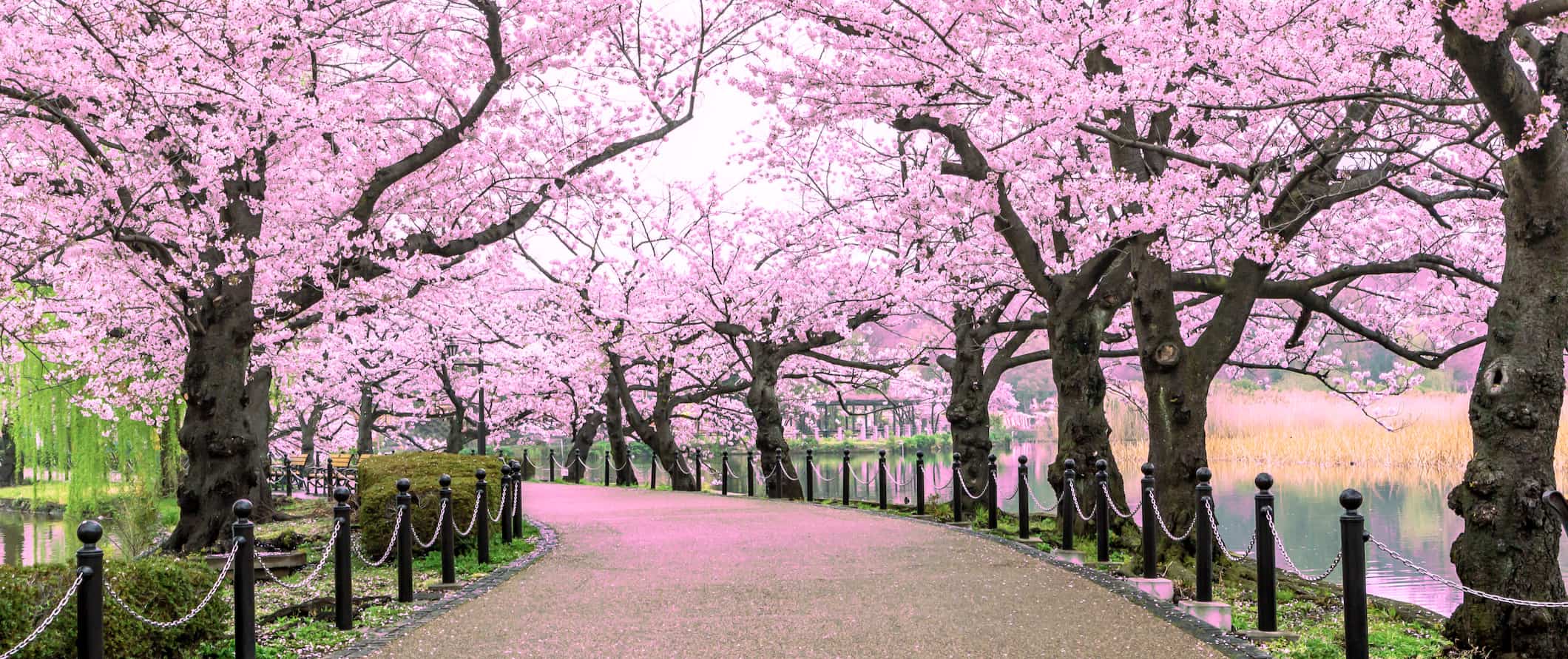
Hostels – Most hostels in Tokyo cost around 4,000-7,500 JPY per night for a bed in a dorm of any size. For a private room with a twin or double bed, expect to pay 10,500-17,500 JPY per night. Prices are the same year-round.
Free Wi-Fi, private lockers, and self-catering facilities are standard in most hostels. Only a few include free breakfast, so research and book in advance if this is important to you.
Budget hotels – If you’re looking for a budget hotel, expect to pay at least 10,000 JPY for a double bed at a two-star location. For a mid-range, three-star hotel, prices start at 12,500 JPY per night, while capsule hotels start at 6,500 JPY for a tiny pod that is essentially just a bed. If you want to stay in a Western chain (think Hilton), expect to spend at least 20,000 JPY or more a night, depending on the brand.
Airbnb is tightly regulated in Japan. It is hotel rooms and guesthouses rather than people’s homes. And prices aren’t that much cheaper than hotels: private apartments or homes on Airbnb usually start around 10,000-15,000 JPY per night. Private rooms aren’t very common and only slightly cheaper, at 7,500 JPY per night.
Food – Japanese cuisine is made up of internationally recognizable dishes, including sushi and sashimi, tempura, gyoza, and miso soup, as well as various noodle-, beef-, and seafood-centric courses. Plus, there’s izakaya (small plates), yakitori (grilled food), curry bowls, BBQ, and so much more. One of the best things about visiting Japan is the food.
There are tons of cheap food options in Tokyo. Soba, curry, and donburi (bowls of meat and rice) cost 400-700 JPY. Ramen costs around 1,200-1,500 JPY. Fast food (think McDonald’s or KFC) is around 750 JPY for a combo meal. Kaitenzushi , or conveyor belt sushi, costs 150-700 JPY per piece.
You can also find plenty of inexpensive meals and prepackaged items at 7-Eleven, Family Mart, or Lawson. Prepackaged meals of noodles, rice balls, tofu, and sushi are all available for 300-500 JPY, making for cheap lunches. (Supermarkets have many meal sets at similar prices too.) The food is actually really good (even the locals eat them all the time), so if you want a quick, cheap meal, don’t be afraid about getting food here.
Inexpensive lunch spots cost around 1,500 JPY. Mid-range restaurants (think three courses, big dinner type of places) cost around 3,000 JPY per person. If you want to splurge, Tokyo is the perfect place to do it, with the highest concentration of Michelin-starred restaurants in the world. Meals at these restaurants cost between 10,000-30,000 JPY. You can also find some all you can eat BBQ spots throughout the city for 4,000-7,000 Yen. (My favorite is Bebu-Ya in Shibuya.)
A beer costs around 600-800 JPY, a glass of wine is 1,000 JPY and up, and cocktails start at 800-1,200 JPY. At the higher end cocktail bars, you’ll pay between 1,600-1,800 Yen per cocktail. A latte is 600 JPY, while a bottle of water is 100-130 JPY. Tokyo also has a lot of all you can drink places that are between 4,000-5,000 Yen. You’ll find a lot of them in the Shibuya area.
For a list of my favorite places to eat in Tokyo, check out this blog post .
Buying groceries costs 5,000-6,500 JPY per week for basic staples like rice, seasonal vegetables, and some fish.
Backpacking Tokyo Suggested Budgets
If you’re backpacking in Tokyo, budget 10,000 JPY per day. This assumes you’re staying in a hostel dorm, cooking most of your meals, grabbing food from 100-yen shops, visiting free museums and temples, using public transportation to get around (or renting a bike for a few hours), and limiting your drinking.
On a midrange budget of 19,500 JPY per day, you can stay in a private Airbnb or hostel room, eat out at some budget restaurants, indulge in some drinks, do some paid activities like visiting a quirky café or going go-karting, and rent a bike for a day or take the occasional taxi.
On a “luxury” budget of 37,500 JPY per day or more, you can stay in traditional Japanese accommodations or hotels, dine in nicer restaurants, enjoy drinks as often as you want, go on paid tours, and take more taxis. This is just the ground floor for luxury though. The sky is the limit!
You can use the chart below to get some idea of how much you need to budget daily, depending on your travel style. Keep in mind that these are daily averages — some days you’ll spend more, some days you’ll spend less (you might spend less every day). We just want to give you a general idea of how to make your budget. Prices are in JPY.
Tokyo Travel Guide: Money-Saving Tips
While Tokyo is one of the most expensive cities in the world, there are still plenty of ways to reduce your costs while visiting. There are lots of free activities, inexpensive dining options, and even cheaper drinks if you know where to look. Here are some ways to save money:
- Skip the taxis – Since cabs can be expensive (they have a 475 JPY starting fare), use public transportation to save money. Tokyo’s Metro runs until midnight, with routes throughout the city, while JR East shuts down at 1:20am. If you can be home before then, you’ll save a ton by avoiding taxis.
- Shop at the 100-yen stores – There are many 100-yen shops (like dollar stores) where you can grab premade meals, groceries, water, toiletries, and household items. This is where you should purchase necessities, allowing you to eat and shop on a budget. Just ask your hostel or hotel where the nearest “Hyaku En” shop is located.
- Eat at 7-Eleven – 7-Eleven, Family Mart, and other convenience stores sell a variety of meal sets for under 500 JPY, which can make for a cheap lunch option. Additionally, supermarkets sell these at similar prices. You can also find a lot of cheap meals (such as curry, ramen, and donburi) at the major bus or train stations. Locals regularly eat these, so don’t be shy!
- Get a transportation pass or prepaid card – Chances are you’ll be using a lot of public transportation to get around. Be sure to get a transit day pass or prepaid card. There are a variety of passes available, since there are many subway and railway companies operating various lines. One-day passes range from 600 to 1,600 JPY.
- Get a Tokyo Museum Grutto Pass – If you plan on visiting a lot of museums, it’s worth it to get this pass, as it’s only 2,500 JPY and gives you admission to 101 museums and other attractions. It’s available as a digital ticket too, which streamlines getting into each museum.
- Stay with a local – Using sites like Couchsurfing that connect you with hosts not only gets you a free place to stay but provides you with the opportunity to learn about local life. Just make inquiries far in advance — the response rate in Japan isn’t great. Try requesting accommodation with expats, as they are generally more active on the platform.
- Work for your room – Certain hostels in Japan let you work for your room. A typical arrangement may involve spending a few hours in the morning cleaning in exchange for free accommodation. Inquire in advance to see if any hostels offer this option for your target dates.
- Sleep in an internet or manga café – These 24-hour cafés are host to late-night gamers, partiers, and businessmen who didn’t make it home after a night out. They rent by the hour, so if you just need to kill some time but don’t want to splurge on a hostel or hotel, consider a café. Some offer beds, though most just have comfortable chairs. Food and snacks are generally included in the price. Rates can be as low as 1,500 JPY per night.
- Buy food at night – After 8pm, many supermarkets discount their fresh foods. If you take advantage of this evening special, you can save up to 50% on the majority of your fresh food purchases.
- Stay at a capsule hotel – If you’re on a tight budget, stay at a capsule hotel. They are a little cheaper than hostels and can help you pinch pennies. Just don’t expect anything fancy!
- Bring a water bottle – The tap water here is safe to drink, so bring a reusable water bottle to save money and reduce your plastic use. LifeStraw makes reusable bottles with a built-in filter so you always know your water is clean and safe.
Where to Stay in Tokyo
Tokyo has lots of hostels, and they’re all comfortable, clean, and social. Here are some of my recommended places to stay:
- Hostel Bedgasm
- K’s House
- Unplan Kagurazaka
For more suggestions, check out my list of the best hostels in Tokyo !
How to Get Around Tokyo
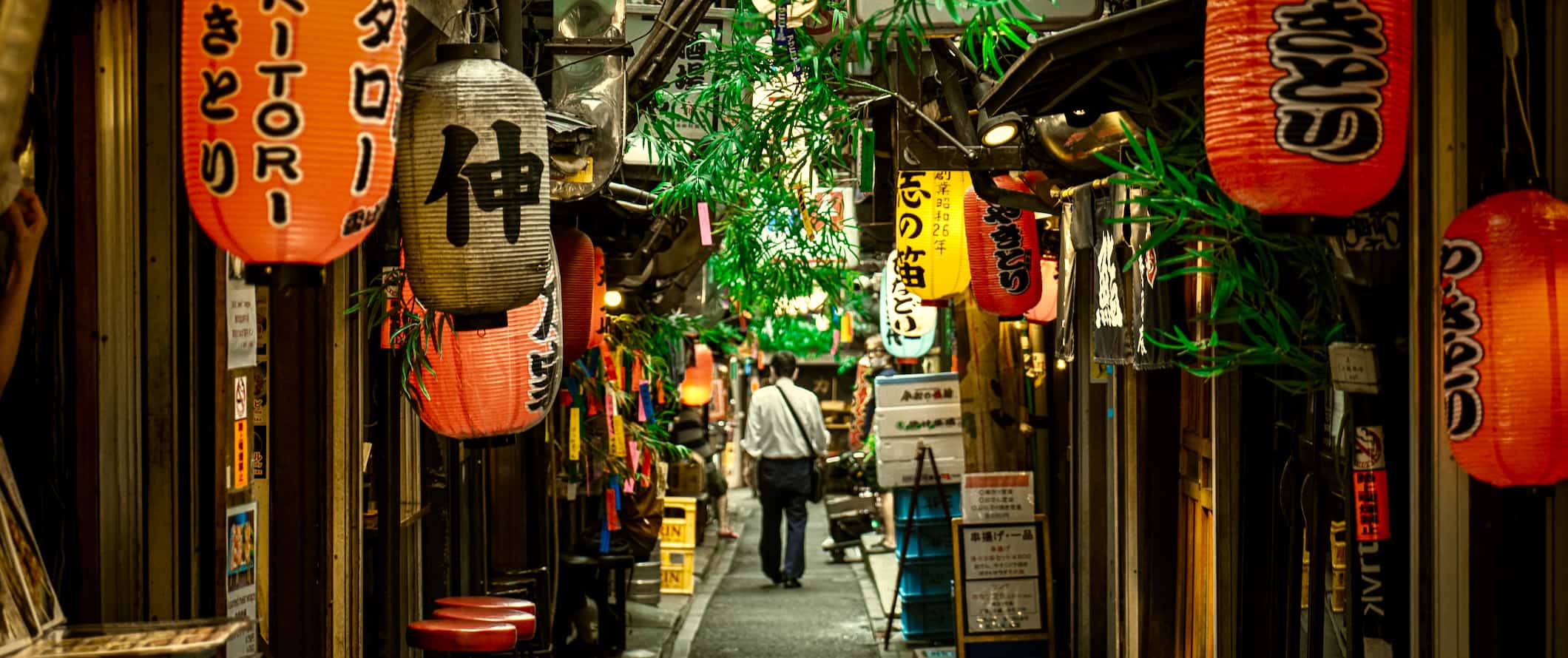
Public transportation – Buses are widely available in Tokyo, though you can usually get by without them, because the subway and train systems are comprehensive. If you do need to take the bus, fares are around 210 JPY for adults and 110 JPY for kids. Toei is the main bus company providing service. A single-day bus pass for Toei lines is 700 JPY (available for purchase directly from the driver). Buses run approximately 6am-10pm.
The metro and Japanese Rail (“JR”) systems throughout Tokyo are the most efficient in the world. They ferry almost nine million riders daily and are known for being extremely punctual. The metro system is made up of 13 different lines, with single-ride tickets starting at 170 JPY (165 JPY with a PASMO or Suica card).
Adults can purchase a 24-hour pass for 800 JPY, a 48-hour pass for 1,200 JPY, and a 72-hour pass for 1,500 JPY, with half-price passes for children. These work on all Tokyo metro and Toei subway lines. JR lines, however, are excluded and tickets for those must be purchased separately.
You can also use a prepaid and rechargeable PASMO passport card (for use on the subway, rail, and bus) or Suica card (for use on JR East lines). Mobile apps for both are available for iPhones and Androids, though the apps are not always compatible with international smartphones. While these cards don’t offer discounted fares, they streamline using public transportation, as you don’t have to fumble with cash every time you ride. These are a great option if you’re not going to make use of an unlimited daily pass. Just keep in mind that you can’t get any of the money back that you put on the card, so load only as much as you need.
Metro trains are available 5am-12am, with women-only cars for added security and safety. Things get busy at rush hour (7:30am-9:30am and 5:30pm-7:30pm on weekdays), so avoid those times if you are able to.
There are also five Metropolitan JR lines in Tokyo (Yamanote, Chuo, Keihin-Tohoku, Sobu, and Saikyo), so if you have a Japan Rail Pass , you can utilize these lines at no additional cost.
Taxi – Taxis in Tokyo aren’t cheap, so I’d avoid them if you can. Fares start at 475 JPY and go up by 415 JPY per kilometer. Skip them!
Ridesharing – Ridesharing in Tokyo isn’t any cheaper than taxis, so don’t expect any savings here. DiDi is the go-to ridesharing app in Tokyo; its prices are generally on par with (or higher than) the JapanTaxi app or Uber.
Bicycle – Tokyo is relatively safe for cyclists. There are many bike lanes, and many locals commute via bicycle. There are both bike-share and bike rental options. For a full-day rental or 24-hour bike share, expect to pay 1,000-1,600 JPY, though pricing varies greatly. Hourly rentals may be found for 200-300 JPY, if you prefer a short-term rental. Often, rental companies charge an additional fee for bike helmets and may require a deposit.
When to Go to Tokyo
The most popular time to visit Tokyo is during the spring or fall, when, respectively, the cherry blossoms come out or the leaves change color and the temperature is cooler.
Temperatures in June-August hover around 32°C (89°F) and it is very humid. It’s not my favorite time to go. The air is very stuffy, and it’s super hot.
Personally, I recommend the shoulder seasons as the best times to visit Tokyo. April-May and October-November see cooler temperatures and better air. Late March through early April is cherry blossom season, so expect massive crowds everywhere.
While winter in Tokyo is cold, it is not unbearable. Temperatures usually sit around 10°C (50°F) during the day and drop to around 2°C (36°F) at night. The city is much quieter during this time as well. Snow isn’t common and, when it does fall, it usually melts within a day or two.
How to Stay Safe in Tokyo
Japan is one of the safest countries in the world. Even in Tokyo, home to 10 million people, there’s virtually zero chance you’re going to get robbed, scammed, or hurt. In fact, Tokyo is consistently ranked as one of the safest cities in the world.
Scams here are virtually nonexistent, but if you’re worried about getting ripped off, you can read about common travel scams to avoid .
Your main risk here is from Mother Nature. Earthquakes and typhoons are common, so make note of the exits when you arrive at your accommodation. Download offline maps to your phone, as well, in the event you may need to navigate during an emergency.
While exploring, note that Japan does not issue building addresses in the order we are used to, so it is easy to get turned around or lost. Also, Japanese citizens possess significantly less English-language fluency than you may have encountered in prior travels, with less than 10% being fluent. Make sure you have an offline map and language app just to be safe.
Solo female travelers should generally feel safe here; however, the standard precautions apply (never leave your drink unattended at the bar, never walk home alone intoxicated, etc.). As a solo female traveler, you may have to watch out for occasional lewd behavior. Some have reported inappropriate behavior, such as men asking personal questions or catcalling. Groping has been reported on the cramped subways. Many train lines have “women-only” cars during rush hour (you’ll see pink signs directing women on where to board), so you can use those if you feel the need.
Japan’s emergency number is 110. For nonemergency assistance, you can call the Japan Helpline at 0570-000-911.
The most important piece of advice I can offer is to purchase good travel insurance. Travel insurance protects you against illness, injury, theft, and cancelations. It’s comprehensive protection in case anything goes wrong. I never go on a trip without it, and I’ve had to use it many times in the past. You can use the widget below to find the policy right for you:
Tokyo Travel Guide: The Best Booking Resources
These are my favorite companies to use when I travel. They consistently have the best deals, offer world-class customer service and great value, and overall, are better than their competitors. They are the companies I use the most and are always the starting point in my search for travel deals.
- Skyscanner – Skyscanner is my favorite flight search engine. They search small websites and budget airlines that larger search sites tend to miss. They are hands down the number one place to start.
- Hostelworld – This is the best hostel accommodation site out there with the largest inventory, best search interface, and widest availability.
- Agoda – Other than Hostelworld, Agoda is the best hotel accommodation site for Asia.
- Booking.com – The best all around booking site that constantly provides the cheapest and lowest rates. They have the widest selection of budget accommodation. In all my tests, they’ve always had the cheapest rates out of all the booking websites.
- Get Your Guide – Get Your Guide is a huge online marketplace for tours and excursions. They have tons of tour options available in cities all around the world, including everything from cooking classes, walking tours, street art lessons, and more!
- SafetyWing – Safety Wing offers convenient and affordable plans tailored to digital nomads and long-term travelers. They have cheap monthly plans, great customer service, and an easy-to-use claims process that makes it perfect for those on the road.
- LifeStraw – My go-to company for reusable water bottles with built-in filters so you can ensure your drinking water is always clean and safe.
- Unbound Merino – They make lightweight, durable, easy-to-clean travel clothing.
- Japan Rail Pass – This is a flexible transportation pass used for navigating Japan. Similar to the Eurail pass in Europe, it turns expensive bullet trains into budget-friendly modes of transportation. You honestly can’t visit Japan without one.
Tokyo Travel Guide: Related Articles
Want more info? Check out all the articles I’ve written on backpacking/traveling in Japan and continue planning your trip:
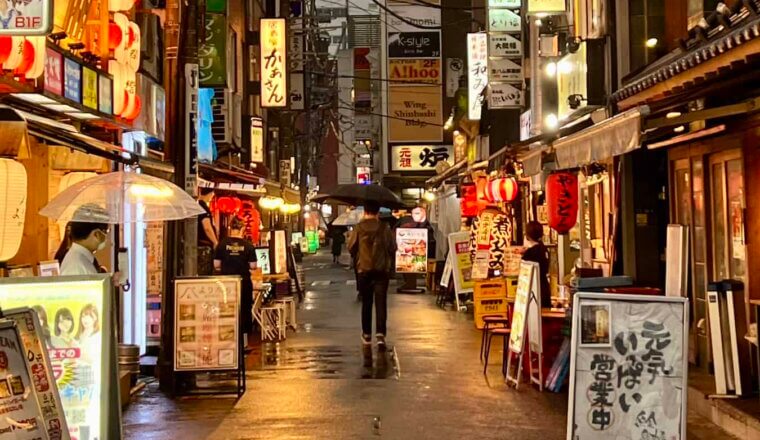
How to Spend Your Time in Tokyo: A Suggested Itinerary
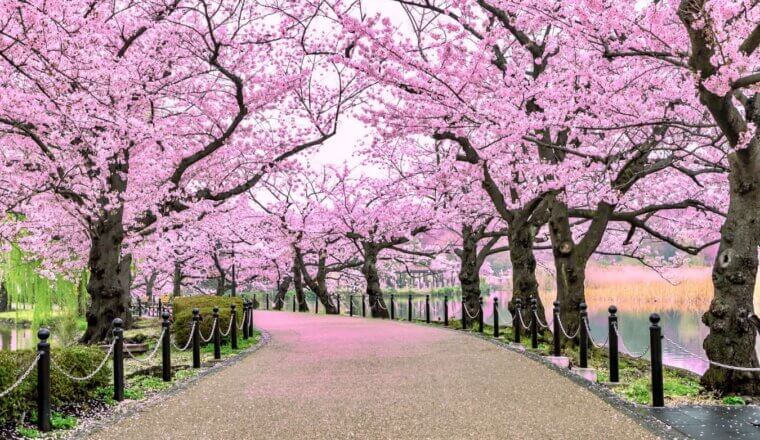
The Perfect 7-Day Japan Itinerary for First-Time Visitors
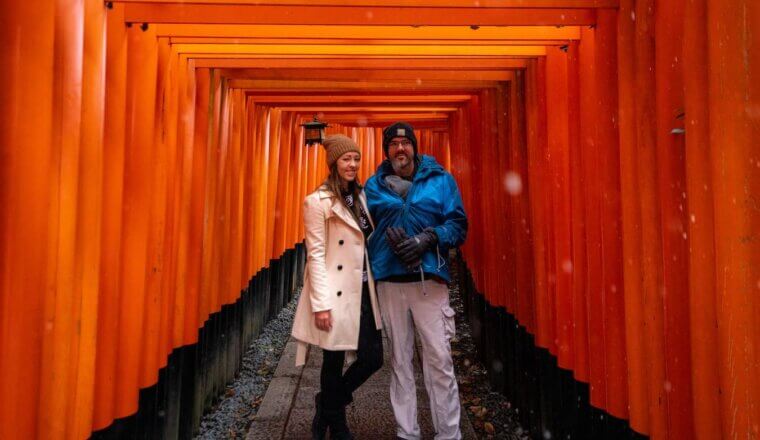
How to Travel Japan with a Baby
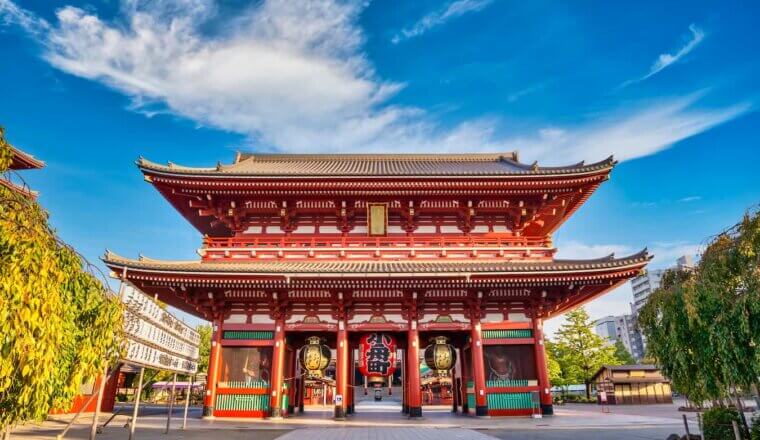
Where to Stay in Tokyo: The Best Neighborhoods for Your Visit
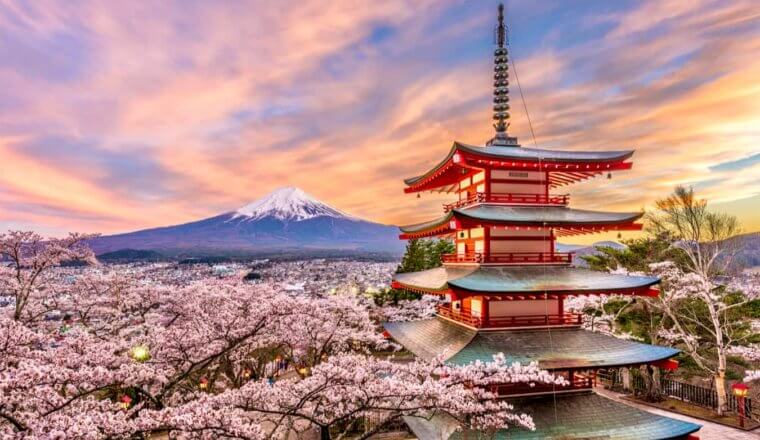
The Ultimate Japan Itinerary for First-Timers: From 1 to 3 Weeks
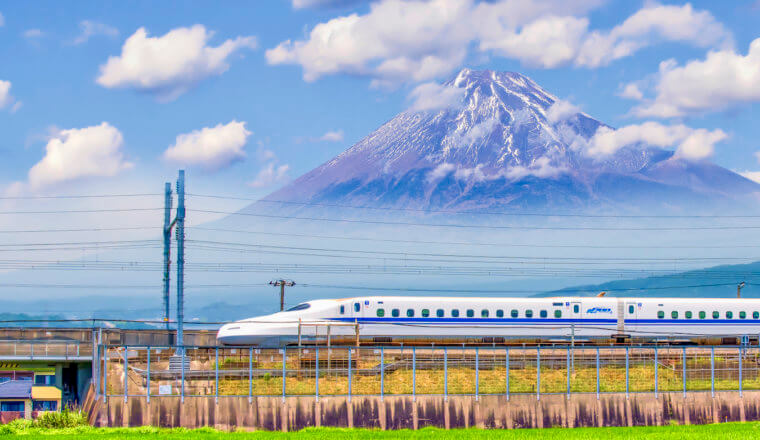
A Complete Guide to the Japan Rail Pass
Get my best stuff sent straight to you, pin it on pinterest.
- Where To Stay
- Transportation
- Booking Resources
- Related Blogs
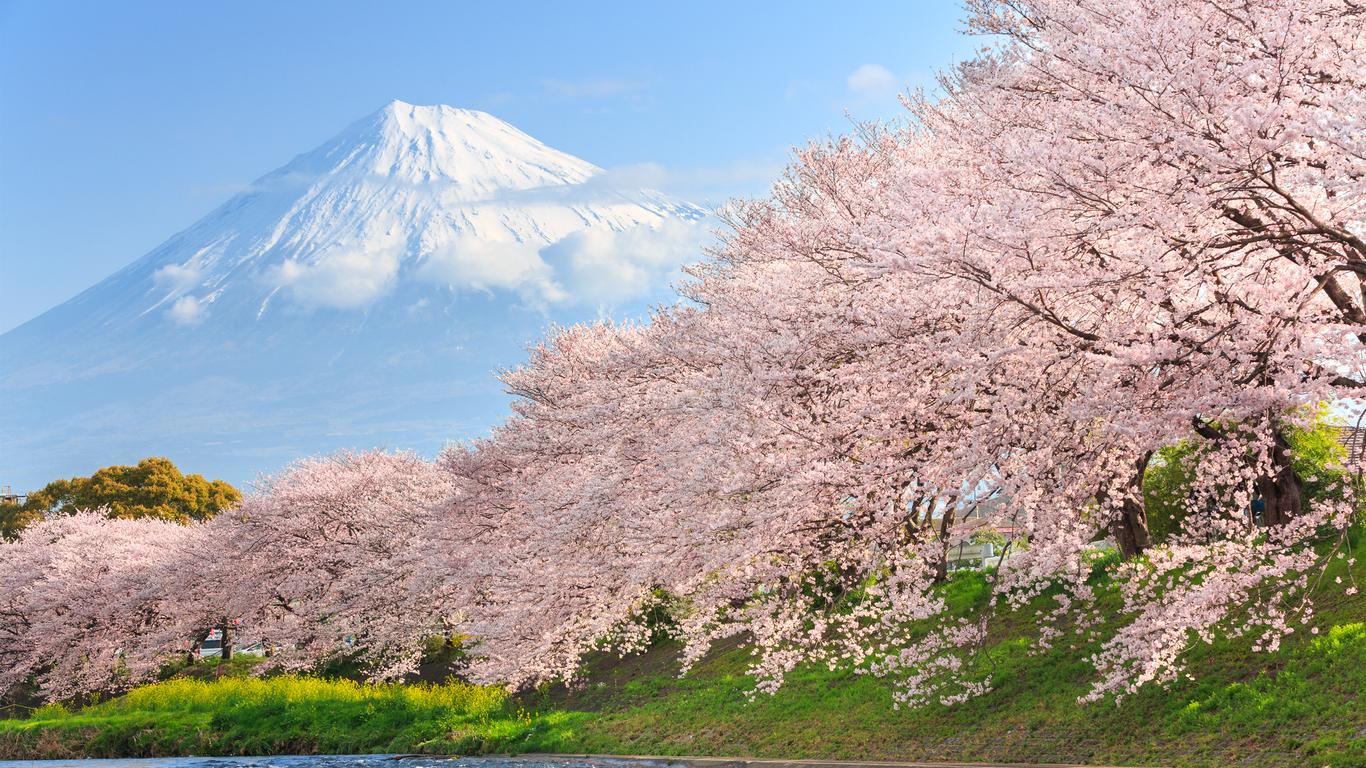
$375 Find cheap flights to Tokyo
This is the cheapest one-way flight price found by a kayak user in the last 72 hours by searching for a flight to tokyo departing on 4/30. fares are subject to change and may not be available on all flights or dates of travel. click the price to replicate the search for this deal., search hundreds of travel sites at once for deals on flights to tokyo.
Save 22% or more Compare multiple travel sites with one search.
Track prices Not ready to book? Create a price alert for when prices drop.
Filter your deals Choose cabin class, free Wi-Fi and more.
Bundle and save Save money when you bundle your flight + hotel.
Cheap flight deals to Tokyo
Flights to tokyo - travel insights & trends, get data-powered insights and trends for flights to tokyo to help you find the cheapest flights, the best time to fly and much more., what is the cheapest flight to tokyo.
In the last 3 days, the lowest price for a flight to Tokyo was $375 for a one-way ticket from Los Angeles and $717 for a round-trip. The most popular route searched for by our users was for flights from San Francisco to Tokyo and the best round-trip deal found in the last 3 days was $712.
How much is a flight to Tokyo?
On average, a flight to tokyo costs $930. the cheapest price found on kayak in the last 2 weeks cost $247 and departed from honolulu. the most popular routes on kayak are honolulu to tokyo which costs $874 on average, and san francisco to tokyo, which costs $1,075 on average., see prices from:, what is the cheapest day to fly to tokyo, based on kayak data, the cheapest day to fly to tokyo is tuesday where tickets can be as cheap as $1,099. on the other hand, the most expensive day to fly is saturday, where prices are $1,281 on average., what is the cheapest month to fly to tokyo, the cheapest month for flights to tokyo is february, where tickets cost $1,263 on average for one-way flights. on the other hand, the most expensive months are june and december, where the average cost of tickets from the united states is $1,684 and $1,634 respectively. for return trips, the best month to travel is september with an average price of $1,273., what is the cheapest time of day to fly to tokyo, the cheapest time of day to fly to tokyo is generally in the morning, when flights cost $1,430 on average. the most expensive time of day to fly to tokyo is generally in the afternoon, which is peak travel time and where the average cost of a ticket is $1,746., what is a good deal for flights to tokyo, if you’re looking for cheap airfare to tokyo, 25% of our users found tickets to tokyo for the following prices or less: from san jose $337 one-way - $625 round-trip, from honolulu $383 one-way - $715 round-trip, from los angeles $432 one-way - $882 round-trip., how far in advance should i book a flight to tokyo, to get a below average price, you should book around 1 week before departure. for the absolute cheapest price, our data suggests you should book 77 days before departure., which is the cheapest airport to fly into in tokyo, prices will differ depending on the departure airport, but generally, the cheapest airport to fly to in tokyo is tokyo narita airport, with an average flight price of $469., which airlines fly to tokyo, japan airlines, ana, and united airlines usually have the most frequent connections from united states to tokyo. see the amount of flights per week for popular airlines flying to tokyo., which airline offers the most flights to tokyo, of the 7 airlines that fly to tokyo, ana offers the most flights, with around 2,215 per week, followed by japan airlines with 1,946 flights per week., how many airports are there in tokyo, there are 2 airports in tokyo: tokyo haneda airport (hnd) and tokyo narita airport (nrt). the busiest airport is tokyo haneda airport (hnd), with 71% of all flights arriving there., how long is the flight to tokyo, the duration of your flight to tokyo depends on your departure and arrival airports. obviously any flights that include a layover will also be longer. the most popular routes to tokyo on kayak are from san francisco , which takes 10h 50m, los angeles , which takes 11h 05m, newark , which takes 13h 40m, and new york , which takes 15h 55m., how many direct flights to tokyo are there each day, there are around 87 direct flights from within united states to tokyo every day. most flights depart in the morning, with 1:00 pm the most common departure time and 53% of flights departing in the morning., how many direct flights to tokyo are there each week, each week there are around 606 direct flights from within united states to tokyo. the most common day for departures is wednesday, with 15% of flights taking off on this day., how many long-haul flights are there to tokyo each week, there are not any medium-haul (3-6 hour flight duration) or short-haul (up to 3 hour flight duration) flights to tokyo. instead, there are 601 long-haul flights (6-12 hour flight duration), with the most arriving from los angeles., how many cities have direct flights to tokyo, from the united states, there are direct flights to tokyo from 16 cities. the city with the most direct flights is los angeles, with 138 direct flights each week., good to know, when to book flights to tokyo, faqs - booking tokyo flights, does tokyo international airport offer currency exchange.
If you need local currency, you can convert it once you arrive at Tokyo International Airport (HND). You can exchange currency at Haneda Airport Post Office Terminal 1, 1st Floor Marketplace, open from 9 am to 6 pm; Travelex Terminal 1, 1st Floor, Marketplace from 9 am to 7 pm; and SBJ Bank offers currency exchange from 9 am to 7 pm in Terminal 2, 1st Floor Lobby.
Where kid entertainment areas are in Narita International Airport?
Children can play at the "Kids Park" available throughout NRT. Its locations include Terminal 1 (airside) near Domestic Services, 2nd Floor, airside 3rd Floor, Terminal 1, near Gates 41 and 51, landside Terminal 1, on 5th Floor. Also, airside Terminal 2, close to Domestic Services on the 2nd Floor, landside, Terminal 2, 4th Floor Main building, and Terminal 3 airside, two floors above 1st.
Where can I get medical care at Tokyo International Airport?
Get medical assistance at Toho University Haneda Airport International Terminal Clinic and Tokyo International Airport Clinic. The first clinic in Terminal 2, 1st Floor Terminal Lobby is operational from 9 am to 10 pm (closed for an hour during lunch, reception until 9:30 pm). The last clinic is in Terminal 1, 1st Floor Marketplace, open from 9 am to 12 pm and from 1 pm to 5 pm. If you have a dental emergency, there is the Terminal Dental Clinic in Terminal 1, 1st Floor, open from 9 am to 12:30 pm and 2 pm to 6:30 pm on weekdays.
Does Narita International Airport have lounges?
NRT has lounges in Terminal 1 and Terminal 2. IASS Executive Lounge Landside, Terminal 1, near Central Building, 5th Floor is only accessible by membership programs and a prepaid lounge pass. KAL Business Lounge in Terminal 1, Airside, Satellite 2, 3rd Floor near Gate 26 requires lounge membership programs to be accessed.
What services do the Tokyo airports offer business travelers?
Business culture is big in Japan and the country’s airports are more than ready to accommodate for this. Haneda Airport has multiple conference rooms available for rent. Business travelers can make use of fax and printing stations within Narita Airport, as well as numerous conference rooms.
What pet facilities are available in the Tokyo airports?
Haneda Airport has animal housing options for both cats and dogs, along with hair trimming and hourly care facilities available. Narita International Airport offers a pet hotel, with a veterinarian clinic and grooming salon.
What is there to eat at the Tokyo airports?
Both airports have extensive dining options ranging from Japanese food to cuisines from around the world. Narita Airport even has halal and vegetarian options for diners with specific dietary needs. Both airports also have a wide selection of confectionary goods and treats, both local and international.
What is there to do in Haneda Airport?
A great leisure option while at Haneda Airport is the Discovery Museum. Here, travelers can peek into the history of Japan while enjoying a luxurious and comfortable environment. There are also observation decks open to the public on top of Terminals 1 and 2.
Are there hotels at the Tokyo airports?
Narita International Airport offers travelers a capsule hotel, with 24-hour reception and check-in. It’s also possible to book into the hotel just to use the shower facilities. Haneda Airport also has a transit hotel and private shower rooms for short-term rent.
Which Tokyo airport is closest to central Tokyo?
There are 2 airports in Tokyo. The closest airport to Tokyo’s city center is Tokyo Haneda (9 miles). Tokyo Narita Airport is 35 miles from the center.
On average, a flight to Tokyo costs $930. The cheapest price found on KAYAK in the last 2 weeks cost $247 and departed from Honolulu Airport.
How does KAYAK find such low prices on flights to Tokyo?
KAYAK is a travel search engine. That means we look across the web to find the best prices we can find for our users. With over 2 billion flight queries processed yearly, we are able to display a variety of prices and options on flights to Tokyo.
How does KAYAK's flight Price Forecast tool help me choose the right time to buy my flight ticket to Tokyo?
KAYAK’s flight Price Forecast tool uses historical data to determine whether the price for a flight to Tokyo is likely to change within 7 days, so travelers know whether to wait or book now.
What is the Hacker Fare option on flights to Tokyo?
Hacker Fares allow you to combine one-way tickets in order to save you money over a traditional round-trip ticket. You could then fly to Tokyo with an airline and back with another airline.
What is KAYAK's "flexible dates" feature and why should I care when looking for a flight to Tokyo?
Sometimes travel dates aren't set in stone. If your preferred travel dates have some wiggle room, flexible dates will show you all the options when flying to Tokyo up to 3 days before/after your preferred dates. You can then pick the flights that suit you best.
Top tips for finding cheap flights to Tokyo
- Enter your preferred departure airport and travel dates into the search form above to unlock the latest Tokyo flight deals.
- Two main airports dominate the skies in Tokyo : Narita International Airport (NRT) and Tokyo International Airport (HND). Narita International Airport, also known as Tokyo Narita Airport, is the major international airport and is located 37 miles east of the city center. Tokyo International Airport, more commonly known as Haneda Airport, is the main domestic hub.
- Narita International Airport is very well connected to Tokyo. The Narita Express is one of the quicker transport options and travelers can take it from any of the rail stations located in the lower levels of each of Narita Airport’s three terminals. The Narita Express takes about 55 minutes to go from Narita Airport to Tokyo Station in central Tokyo.
- Haneda Airport sits in the heart of downtown Tokyo and consequently has direct access to Tokyo’s public transport system through stations within Haneda Airport. Visitors have multiple choices for public transit, including the Tokyo Monorail and Keikyu Railways. Both of these options connect to subway lines and are cheap and quick means of transport.
- Narita International Airport (NRT) is one of the largest airports in Tokyo with three terminals. Terminal 1 consists of a wing at the north and the south ends, with other satellite areas from both wings. The 2nd and 3rd Terminals have a main building and a single satellite area.
- HND has 24h ATMs in the International Terminals on the landside, 3rd Floor, Departure Lobby, airside, 3rd Floor, Gates 109-111, and Gates 112-114.
- Baby care facilities in NRT are available in all three terminals. They are in Terminal 1, on all five floors, Terminal 2 on floors one to three, and Terminal 3 has them both airside and landside on all three floors. Strollers are also offered at NRT for free. Inquire at any information desk at the airport to get these strollers.
- In need banking of services? Mizuho Bank in HND offers currency exchange, an ATM, and full-service banking, located on the International Terminal, landside, 1st Floor near Entrance Plaza and Terminal 1, 1st Floor Marketplace. The bank is operational from 9 am to 3 pm on weekdays and closed on holidays and weekends.
- Pray and meditate before your flight in NRT prayer rooms . They are located in Terminal 1, landside, 5th Floor, Terminal 1, airside, 2nd Floor, Terminal 2, landside and airside main building, 1st Floor, Terminal 3, landside, 2nd Floor and airside, 3rd Floor. They are open from 6 am to 11 pm.
- For many travelers, discovering Japanese culture is a trip highlight. The journey starts at Narita International Airport, with daily events tailored to introduce you to Japanese culture right after you land in Tokyo. Events are held in Terminals 1 and 2, and include photo ops and exhibitions.
Prefer to fly non-stop to Tokyo?
Find which airlines fly direct to Tokyo, which days they fly and book direct flights.
Nonstop departures
United States to Tokyo
AIR PREMIA, ANA, AccesRail, +93 more
AIR PREMIA, ANA, +94 more
ANA, AccesRail, Aero K, +92 more
ANA, AccesRail, +93 more
AIR PREMIA, ANA, AccesRail, +92 more
AIR PREMIA, ANA, +93 more
AIR PREMIA, ANA, AccesRail, +94 more
AIR PREMIA, ANA, +95 more
Nonstop returns
Tokyo to United States
Top 5 airlines flying to tokyo.
The space for the seats i like it. Its not too close like other air line. The food is ok and also the staff. I'm waiting for my flight rewards point because until now i didn't recieved it.
The staff, ground and air, at ANA was very helpful and friendly during check in, boarding and during the flight. This is the reason why I always fly ANA whenever I go to Manila. The food was not the best but the flight crew more than makes up for the shortfall.
First I will say this was really NOT an ANA flight. ANA used a UNITED jet to perform this flight. I specifically booked with ANA because I did NOT WANT TO FLY UNITED FOR INTERNATIONAL FLIGHTS. So to spend $1800.00 and then discover after booking that it was going to be handled by United was very disappointing. I will be more careful next time when I book. The interior was very cramped in economy class; the dinner meal was terrible and also had extremely small portions for an international flight - the bread roll was ice cold and stale - that salad was very wilted; I’ve never had a “snack” that was so salty that it was difficult to eat; the breakfast “waffle” was practically unrecognizable. Really horrible meals for a very expensive international flight. Bathroom floor was also pretty dirty. I’m hoping my return flight is a real ANA airplane that is cleaned and serviced by ANA personnel with ANA meals. I will never book with ANA again if they continue to use UNITED airline jets. Yuck!!!🤢
Ticket was purchased as a United Airlines flight (operated by All Nippon) like what does that even mean? Makes for a VERY confusing flight experience. For instance, what do I look for a United drop off signage and ticket counter or ANA? No explanation anywhere to be found. I also felt a little bit scammed by the obsurdely restrictive seat selection provided. Only middle seats available!! Are you kidding me!! On 6hr + 10hr flights you're forcing me into the middle seat without telling me before I purchased the ticket?? This should be illegal. And to top it off, on the Tokyo LA leg there were quite a few empty seats including window seats! I must also say, the food was a dissappointing as well for my taste, fish with rice ( mostly plain white rice) or a vegetable medly for the breakfast meal? Should be at least 4 choices and at least 1 with eggs. Outside of these issues flight was otherwise ok.
Ground and flight crew were all courteous, extremely helpful and professional. Overall, process is really organized, from boarding to disembarkation.
This is a very long flight and the first time I have flown on a Japanese airline. I was very impressed with the staff. They worked hard and offered food and drink regularly. Plane was very well cared for. The let room was good . Food was ok but better than other airlines.
It was very nice. I was a bit disappointed by the few meal services. There were probably more drink services that I missed while sleeping, but I would have liked the crew to bring more than one drink service before landing and to bring more than one drink service and coffee service after take off
The space and bed was very comfortable , flight attendants very nice. The food was not tasty at all. I ordered the rib eye and it was so tough I couldn’t cut it.
Seat was roomy enough . The Asian selection for a meal was good . The tortellini was not very good. Service was excellent. O
It was very good. Lots of room with superior food and service. I will not hesitate to fly ANA in the future!
The food was not that good. I liked the miso, green tea, and ice cream. I wasn’t able to put my carry on bag under the seat in front of me. The flight was smooth. Please expand your choices of movies especially the new ones. I can’t choose any of those films. They’re old.
I like the braised beef., miso soup,, and green tea. Very little choices of hollywood movies. The PA announcement in English was not very clear and very soft. I could hardly hear.
More updated movies & Chinese movies. The food sometimes overcooked. Prefer to have more neat snacks in between than just choose from the menu. Please change the menu every now and then. This is my second time flying within one year and the menu didn’t change at all!
Food is lagging. Very poor choice. Like vending machine fast food.
Please change the menu more often. The beef is not tender, more choice in ice cream flavor. Dessert is not good too.
The Experience was fantastic, it's a quick flight so no entertainment or food. Just a refreshment
Again I paid for an upgrade on my credit card didn’t get it need a refund. . American I not good at gettin in contact for refunds.
l enjoyed the variety of good and drink choices. The flight attendants were very quick and efficient to our needs.
-Bathrooms were regularly checked/maintained. -Food was okay, but the miso soup was good. -Top of my foot got bitten by a bug when I took off my shoes and was only wearing my socks. It was swollen and very itchy for several days.
Truly impressive service in the air. After the main meal, they have a delicious a la carte menu that you can order anytime until 1.5 hrs prior to landing. Flight crew were so pleasant and very efficient. Wish I could fly JAL more often!
Due to one crew member not showing up to work, our flight was significantly delayed causing us to miss our connecting flight in Houston to Mississippi causing us to be delayed by more than 6 hours and missing our event all together. Very disappointing. All because ONE crew member called in sick. United did grant us a $15 meal voucher, which was a small but appreciated concession that I wasn’t able to use because I ordered my lunch and paid for it before applying the concession, and the staff said it was too late to use it. Ugh! We also had a TWO delay coming back from Mississippi, but that was on American Airlines and it was due to weather, so not their fault. Anyway, not at all impressed with United’s handling of our flight and the HUGE disappointment of missing our important family event for our 90 year old mother. All that money and all that stress and emotions for nothing. Having to wait the hour to bring an employee from LAX seemed like something that should not have happened. Why don’t you have a local back-up? Santa Ana is not a little airport in a rural area.
Flight delayed from Cape Town to Washington then got diverted to miami and in miami we had to fend for ourselves , im still trying to get to Shreveport now
delay several times and wait extra long to board. no entertainment service because there are problem for some rows. always encounter some delays for the last flight of the day.
I just wrote a text which was supposed to be for the flight from Denver to spokane not Frankfurt to Denver.
On time every leg of the journey and exceptional staff at counter, gate, and on board. I haven’t travelled in US for a long time and was genuinely surprised how pleasant this was.
Hated every minute of it. This flight should have only taken 1.5hrs but was delayed over 10hours. Now I am being told I cannot be compensated or refunded my ticket price or extra leg room, which I purchased but did not receive, because the airline is throwing the blame on the 3rd party I purchased tickets through and 3rd party putting the blame on airline. No one wants to help. They received their money and that's all they care about. Im going on 3 days of still trying to get to my final destination, had to cancel car rental, car insurance and hotel. Currently staying in airport until hotels open up. Thank you Lufthansa, Kayak, Underpricer and United for making this trip the worst ever.
The delays (5 hrs) were a comedy of errors, and the multiple safety issues encountered were very concerning.
flight delays, staff only communicating when pushed, food service lasting a grand total of 7 minutes, stuck in seat from 45mins into flight until landing
Crew was great and did their best to make us comfortable and captain came out at the beginning to announce why the flight was delayed, weather situation up ahead, and kept us updated throughout the flight.
the flight from Tampa departed with a delay. The food on board was poor, usually on international airlines alcoholic beverages are offered free of charge , but here it was for a fee, the cutlery was wooden, there were no hot drinks (tea, coffee). Unfortunately, I didn't take pictures of the portions of food, but it wouldn't have been enough for a child either.And in the future, I will try not to use the services of this airline
Nice service. I wish it could provide hot water on the flight.
internet didn't work. No offer of drinks or snacks.
Flight was seamless. Free wifi helped pass the time. Food was okay, just make sure you pre order or pick something up from the airport
Internet connection very poor, means you can not even order items through their own shop.
Paid for business class lay flat seat. Significantly less comfortable than other carriers. No built in entertainment or WiFi. I barely saw flight attendants at all and they wanted to charge me for a bottle of water if i wanted more than what came with the meal (that i also paid extra for). Essentially you’re just paying for a slightly more comfortable seat than the rest of the plane and nothing else
Een prijsvechter, dus dat moet je ook verwachten. Voor alles moet je betalen. We hebben vooraf een maaltijd en een amenitiesset besteld. Die kregen we netjes uitgereikt aan boord. Het is BYOD voor het amusement tijdens de vlucht en dit werkte uitstekend. Geen trage wifi, helemaal niet. Alles kost geld, zelfs een flesje water. Misschien op langere vluchten wel gratis water, thee, koffie. Maar daarentegen mag je na de security je lege drinkflessen gewoon vullen en mee aan boord nemen
Wifi could have been better. Arrived 55 mins earlier than scheduled :)
Best part are two crying babies throughout the whole 11 hour trip
Clean and comfortable cabin. Friendly on board service. No vegetarian food options and movie options were very limited. Internet was very slow
I didn’t eat the food but there wasn’t an option. Seat was a little too small for me but everything else was great
Due to a strike taking place with the airline, it negatively impacted my flight in multiple ways. My flight was delayed over 2 hours and the food served was mediocre at best.
Cabin crew were great. Seats are criminal for tall people
Flight was delayed 1.5 hrs due to problem with a previous flight to mine; I was informed appropriately via Text & Email, however, website did not keep up with messages sent by nearly an hour. When checking-in warm & friendly reception at check-in desk until female Air Canada Rep noticed my flight number and instantly pivoted to a condescending & sarcastic comments about getting my bag checked in since I’m running so late; then tone instantly changed again few minutes later when she muttered, “Oh, they’ve delayed it” another sign systems & worse front line staff, not fully informed or simply not reading their flight status updates. Flight crew were very friendly & did a great job trying to make up lost time due to the delay.
It was great, love the experience and will definitely recommend 👌. Communication was great
My flight was great! Gate attendants and crew were great… pleasant and in good spirits. Flight delayed several hours and we were well informed of the status while on plane. Thank you!
The fact that I got to Toronto alive and well and safe is a huge plus. I thank the captain and crew for a safe flight The comfort of the aircraft leaves much to be desired. Human beings should not have to be that cramped and squashed on a flight that we pay a lot for and even have to pay for lousy food choices The cabin crew were pleasant and helpful Kudos to them as the flight was packed to capacity and there was a lot of work for them in a short space of time All in all a good experience, but too cramped
It was great to check carryon luggage at no charge when there was no room for ours. A hidden benefit of having low-tier tickets. Also great to stay off plane as long as possible. Airline gave us seats we wanted on this last leg, again at no charge.
Fresh fuit or veg snacks would be so great, but there are two good restaurants in Denver airport. Try Etais UDIS or Freshens DIA for nutritious delicious pita sandwiches/ donairs and crepes in Freshens.
The late departure Of two hours waitresses, immature, and gossiping
Crowded plane but it flew on time and had friendly staff
Book Cheap Tokyo Plane Tickets
Recent round-trip flight deals, search by stops, search by airline, search by price, recent one-way flight deals, recent domestic flight deals, last minute flights to tokyo, last minute flight, train and bus deals, flights to tokyo, return flight deals:.
Tokyo - United States
Cabin classes:
Browse origins:.
- Flights »
- United States
Popular routes
The most searched flights to Tokyo by KAYAK users.
Browse destinations:
- Worldwide »
Update April 12, 2024
Information for u.s. citizens in the middle east.
- Travel Advisories |
- Contact Us |
- MyTravelGov |
Find U.S. Embassies & Consulates
Travel.state.gov, congressional liaison, special issuance agency, u.s. passports, international travel, intercountry adoption, international parental child abduction, records and authentications, popular links, travel advisories, mytravelgov, stay connected, legal resources, legal information, info for u.s. law enforcement, replace or certify documents.
Tourism & Visit
Study & Exchange
Other Visa Categories
U.S. Visa: Reciprocity and Civil Documents by Country
Share this page:
U.S. Embassy Tokyo, Japan - TKY
Please follow the steps below before your immigrant visa interview at the U.S. Consulate General in Tokyo, Japan
Step 1: Get a medical exam in Japan
As soon as you receive your appointment date, you must schedule a medical exam in Japan. Click the “Medical Exam Instructions” for a list of designated doctors’ offices in Japan. Please schedule and attend a medical exam with one of these doctors before your interview.
Medical Exam Instructions >>
Step 2: Complete your pre-interview checklist
It is important that you bring all required original documents to your interview. We’ve created a checklist that will tell you what to bring. Please print the checklist below and bring it to your interview along with the listed documents.
Pre-Interview Checklist >>
Step 3: Review interview guidelines
Read our interview guidelines to learn about any special actions that you need to take before your visa interview.
Interview Guidelines >>
Medical Exam Instructions
All immigrant visa applicants, regardless of age, require a medical examination prior to the issuance of a visa. Only a physician accredited by the U.S. Embassy can perform this exam. It is your responsibility to schedule a medical exam with one of the doctors listed below before your visa interview appointment at the U.S. Embassy. Medical examination results from other physicians will not be accepted. Your medical case will be ready approximately five days after you were notified of your immigrant visa appointment. Please refrain from contacting panel physicians until five days after receipt of your appointment.
The medical examination report is normally valid for maximum of six months.
The medical examination information and approved Physicians are available at the Embassy website.
During the medical exam
The medical examination will include a medical history review, physical examination, and chest X-ray and blood tests (forapplicants 15 years of age or older). The United States also requires tuberculosis (TB) testing for all applicants two years of age and older. Please be prepared to discuss your medical history, medications you are taking, and current treatments you are undergoing. More information on general medical requirements for U.S. immigrants is available on Centers for Disease Control website .
U.S. immigration law requires immigrant visa applicants to obtain certain vaccinations prior to the issuance of a visa. Current immigrant visa vaccination requirements are available on CDC's website . You can also read Frequently Asked Questions about our medical examination requirements on Travel.State.Gov .
After the medical exam
When your examination is completed, the doctor will provide you a copy of the vaccination worksheet by email or by post. For DV and K visa applicants, the panel physicians will send you the exam results in a sealed envelope. DO NOT OPEN THIS ENVELOPE . Instead, bring it to your visa interview. Any x-rays taken will be given to you. You DO NOT need to bring the x-rays to your interview. However, you must carry the x-rays with you when you travel to the United States for the first time.
back to top
Pre-Interview checklist
Please use the list below to determine the items that the applicant must bring to the immigrant visa interview:
A “LetterPack Plus” self-addressed, prepaid envelope (available at most post offices). Please write “documents” on the “Contents Descriptions” field and include a local address. We will use this to return your passport after the interview.
A copy of you NVC interview letter (does not apply to Diversity Visa, fiancé(e), adoptive, or asylee/refugee applicants).
Unexpired passport valid for six months beyond your intended date of entry to the United States.
Two (2) color passport-size (5 cm x 5 cm, or 2 inch x 2 inch) photographs of each person applying for a visataken against white background. Please review our online photo requirements.
Confirmation page from the Form DS-260 Application for an Immigrant Visa you submitted online at ceac.state.gov/iv .
Your original birth certificate, English translation, and a photocopy.
Original or certified copies of birth certificates for all children of the principal applicant (even if he or she is not accompanying) .
Applicants who fall into any category below should bring these additional documents:
For family-based visa applications:
- The appropriate Form I-864 Affidavit of Support for each financial sponsor along with a photocopy of the sponsor’s the most recent IRS transcript, or most recent U.S. federal income tax return, and any relevant W-2s, if the transcript is unavailable. If more than one person is travelling on the case, a photocopy of the Form I-864 and supporting documents must be provided.
- Proof of your U.S. petitioner’s status and domicile in the United States (photocopy of a U.S. passport, naturalization certificate, or lawful permanent resident card).
- Evidence of the relationship between the petitioner and visa applicant (such as photographs, letters, or emails).
If you are married : Your original marriage certificate, English translation, and a photocopy.
If you were previously married: Your original divorce or spouse’s death certificate(s), English translation(s), and a photocopy.
If you are 16 years of age or older: The original or certified copy of a police certificate from all countries you have lived in using these criteria .
Note: Your Japanese police certificate should be in a sealed envelope. If the seal is broken, the certificate is no longer valid. (Only send a photocopy of the sealed envelope to National Visa Center, but not the actual police certificate itself.)
For employment-based visa applications: A letter from your U.S. employer dated less than one month ago.
If you have ever been convicted of a crime: Court and criminal records, English translation, and a photocopy.
If you have served in any country’s military: Military records, English translation, and a photocopy.
If you are adopted: Adoption papers or custody documents, English translation, and a photocopy.
If you are the petitioner’s stepchild: The original marriage certificate of the petitioner and your biological parent, English translation, and a photocopy along with divorce records for any previous marriages of either parent.
Interview Guidelines
Sending documents to the U.S. Embassy
If the consular officer asks you to submit additional documents to the U.S. Embassy, please follow any instruction given by the interviewer.
Rescheduling or cancelling your interview
If you are unable to attend your appointment, please use the embassy’s Interview Request Form to ask for a new appointment date. There may be a significant wait before the next available appointment , so please attempt to attend the date already assigned. For some family-based and employment preference visa categories, a visa became available within the month you have been scheduled by NVC. DV applicants should be aware that visas are numerically limited and must be issued by September 30 of the program year. There is no guarantee that a visa will still be available on the date of your rescheduled interview. Please consult the Visa Bulletin before you decide to reschedule your interview.
Security screening procedures
All visitors to the U.S. Embassy in Tokyo must follow certain security procedures. Any visitor who declines to be screened by U.S. Embassy security personnel will be unable to enter the embassy. To avoid delaying your entry and that of those in line behind you, please bring only what is required for your interview. For detailed information on screening procedures please refer to our website .
Accompanying persons
The following persons may accompany a visa applicant to their interview:
- Special Needs Visitors: Applicants may bring ONE person to help if they are elderly, disabled, or a minor child.
Attorneys are not permitted to accompany clients into the waiting room or to their interview.
Immigrant visa fees
If you have not paid all required fees to the National Visa Center, please be prepared to pay these fees on the day of your interview.
All fees may be paid in either Yen or U.S. dollars. We accept cash, credit cards (Visa, Mastercard, Discover, American Express, Diner's Club, and JCB) and U.S. postal money order payable to "U.S. Embassy, Tokyo." Please note that if you are found ineligible to receive a visa, the application fee cannot be refunded. A complete list of fees can be found at Travel.State.Gov . Please also be prepared to pay with cash in case the credit card verification system is unavailable. Payment by credit card is billed in U.S. dollars.
Do not make travel plans outside of Japan
If your visa is approved, we will keep your passport at the embassy while we prepare your immigration packet and print a visa for your passport. We will return your passport to you later via mail only. If you have to travel within Japan while your passport is still with us, please make sure you have a valid picture ID other than your passport.
After Your Visa Interview
A consular officer can make a decision on a visa application only after reviewing the formal application and interviewing the applicant. There is no guarantee that you will receive a visa. Do not sell your house, car or property, resign from your job or make non-refundable flight or other travel arrangements until you have received your immigrant visa.
If more information is needed
Sometimes a consular officer is unable to make a decision on a visa application because he/she needs to review additional documents or the case requires further administrative processing. When additional documents are requested , the consular officer will give you a letter asking you to submit additional items. The letter will include instructions on how to submit those documents to the embassy. Administrative processing takes additional time after the interview. Most administrative processing is resolved within 60 days. However, the timing varies based on the circumstances of each case. Before inquiring about the status of administrative processing, please wait at least 60 days after your interview.
What happens after visa approval
Passport, Visa, and Sealed Immigrant Packet – We will place your immigrant visa in your passport. Please review your visa to make sure there are no spelling errors. Some applicants may receive a sealed envelope containing documents that you must give to U.S. immigration authorities when you arrive in the United States. Do not open this envelope. You must carry it with you; do not put it in your checked luggage. After your medical exam, only DV and K visa applicants will receive X-rays on a CD. Bring it with you when you enter the United States on your immigrant visa.
USCIS Immigrant Fee – All individuals who are issued immigrant visas overseas must pay an Immigrant Fee to U.S. Citizenship and Immigration Services (USCIS) prior to traveling to the United States. This fee is for processing your residency status and printing your Permanent Resident Card. The only people exempt from paying this fee are: children entering the United States under the Hague and Non-Hague Adoption Process, Returning Residents (SB-1), Iraqi and Afghan Special Immigrants and people traveling on a K visa.
When You Should Travel – You must enter the United States before the expiration date on your visa, which is usually six (6) months from the date of printing. Your visa cannot be extended and all fees are nonrefundable. The principal applicant must enter before or at the same time as other family members with visas. Unless they are eligible for benefits under the Child Status Protection Act, children who are issued a visa before turning 21 years of age must enter the United States before their 21st birthday to avoid losing their immigrant status.
Getting a Green Card – Your Form I-551 Permanent Resident Card, also known as a green card, will be automatically mailed to the address in the United States that you write in your visa application form. This is a very important document that proves you have permission to reside in the United States. We also recommend you check with the airline to ensure you are in compliance with their rules. Once your card is issued, you should not stay outside of the United States for more than one year. If you do, you will lose your status as a Lawful Permanent Resident.
Children’s Issues – In the United States, children are required to have certain vaccinations before they can enroll in school. We recommend that you bring your child’s complete vaccination records with you to the United States. If your child is adopted, you have full custody as a result of a divorce, or you share custody with another parent, you should bring a copy of all applicable adoption or custodial papers from the authoritative court in your home country. You will need these papers (translated into English) for issues such as school enrollment, medical care, and eventual citizenship.
Information for New Immigrants – Please visit the USCIS web page for helpful information on moving to the United States. You can read their publication “ Welcome to the United States: A Guide for New Immigrants ” online.
Diversity Visa Applicants - Additional Information
If you are interviewing for a Diversity Visa (DV), all of the above instructions apply to you. Please schedule and attend a medical examination prior to your visa interview and gather the required documents.
Below are additional instructions that apply only to DV applicants.
Bring to your interview
In addition to the documents listed on the Pre-Interview Checklist in this package, DV applicants should also bring the following items to your visa interview:
- Appointment information printed from the “Entrant Status Check” on the E-DV website .
- Documents showing that you have either a qualifying high school education OR have two years of qualifying work experience in the last five years immediately prior to application (for the principal applicant only; more information is available on Travel.State.Gov ).
- Payment in cash, or a U.S. postal money order, by credit card (VISA, MasterCard, Diners Club, JCB or American Express) for the $330 Diversity Visa Application Fee
- Overcoming Public Charge: The Immigration and Nationality Act requires all immigrant visa applicants to establish to the satisfaction of a consular officer at the time of the application for a visa, and also to the satisfaction of an officer of the Department of Homeland Security at the time of application for admission to the United States, that he/she is not likely to become a public charge.
Review your DV Lottery entry
Prior to your visa interview, we recommend that you review the data on your initial E-DV entry. On your initial E-DV application, you must have correctly entered your marital status. If you are legally married you must have listed your spouse, even if you are currently separated from him/her (unless your spouse is a U.S. citizen or Lawful Permanent Resident).
Additionally, you must have listed ALL of your living children who are unmarried and under 21 years old. This includes your natural children, your spouse’s children, or children you have formally adopted in accordance with the laws of your country (unless your children are a U.S. citizen or Lawful Permanent Residents).
Failure to have listed an existing spouse or children at the time of your entry in the Diversity Visa lottery will result in the denial of your visa and visas for your family. Any fees paid to the U.S. government in support of your visa application(s) are nonrefundable. If you failed to include a child who had already been born, or a spouse to whom you were married when you entered the lottery, you should not proceed with the visa application. You can review the eligibility requirements at Travel.State.Gov .
Last Updated: 3/5/2024
Contact Information
1-10-50 Akasaka Minato-ku, Tokyo 107-8420 Japan
Other Links
Diversity visa instructions After your interview Frequently asked questions Where to find civil documents
Interview Preparation Video

External Link
You are about to leave travel.state.gov for an external website that is not maintained by the U.S. Department of State.
Links to external websites are provided as a convenience and should not be construed as an endorsement by the U.S. Department of State of the views or products contained therein. If you wish to remain on travel.state.gov, click the "cancel" message.
You are about to visit:
Tokyo Government Confirms Tsukiji Redevelopment Project
- Architecture
Posted by Editorial Staff
The Tokyo Metropolitan Government has formally announced its selection of a consortium of 11 companies, including real estate developer Mitsui Fudosan Co. . and The Yomiuri Shimbun Holdings , as a business operator to redevelop an approximately 47 acre lot at the former site of the Tsukiji Market in Chuo Ward. Read more
U.S. Airlines Propose New Direct Flight Service to Tokyo
In the intricate dance of international aviation, securing slots at Tokyo’s Haneda Airport is no simple feat for U.S. airlines. The meticulous control exercised by Japanese authorities over takeoff and landing permissions for long-haul flights at Haneda adds an additional layer of complexity.
Back in 2019, a collaboration between the U.S. Department of Transportation and Japanese authorities resulted in the allocation of extra slots at Haneda to select domestic carriers. These allocations, however, came with a ‘use-it-or-lose-it’ stipulation, temporarily relaxed during the pandemic but now a thing of the past as of last month.
Quick Guides — Koenji (高円寺)
Nestled in the vibrant heart of Tokyo, Koenji is not your typical destination. It’s oozing with cool, but the kind that’s more subtly confident than ostentatious.
Tap-and-Go Payments Will Be a Revelation for Tokyo Transit
Any traveler to Tokyo usually relies heavily on rechargeable IC cards like Suica and Pasmo , even though multi-day travel passes and single trip paper tickets are also available.
Refilling and topping up those cards, let alone purchasing physical tickets, can be a bit burdensome if you lack experience operating the ticket terminals, apps or are hesitant to speak with a ticket agent.
The temporary halt in sales of Pasmo and Suica cards last month due to a global shortage of semiconductors added an additional layer of complexity for travelers and daily commuters.
Now, a welcome and significant announcement has surfaced — major Tokyo train companies are getting ready to introduce contactless fare systems that you can pay with credit and debit cards.
Changes of a Seasonal Country
The New Yorker’s Matt Alt writes a thoughtful piece on the changes Japan is experiencing not only with their weather, but also their seasonal culture. From the effects on its aged society, to the early blooming of cherry blossoms.
Considering Tokyo? Start Here. [2023]
Japan’s capital city is massive, with over 14 million people, but that doesn’t create an overpowering atmosphere. Instead, Tokyo is one of the world’s friendliest, most welcoming capitals, with a vast array of neighborhoods just waiting for visitors to explore.
For close to three years, pandemic border controls halted foreign travel to Tokyo, leaving its cityscape, sights and scenes exclusively to locals.
Now, with international tourists welcomed back in full, those willing to explore beyond the busier districts of Harajuku, Shibuya and Shinjuku and wander down mazes of side streets in Sangenjaya or Shimokitazawa will find their own version of happiness sipping coffee in a charming kissaten , shopping the racks of a specialty boutique or taking refuge in many of Tokyo’s natural sanctuaries.
We like to think of Tokyo as “the capital of concealed treasures”, where you can imbibe at an intimate bar tucked up in a small office building or enjoy ultra-premium sushi hidden in plain sight.
MUSTARD HOTEL — SHIBUYA
Truly effective design bridges the gap between needs and requirements.
In this case, the needs are neighborhood access, convenience and practicality. The requirements are thoughtful, understated design, fair pricing and cohesiveness in experience.
Simple yet striking, MUSTARD HOTEL delivers a pronounced “secret ingredient” to Shibuya and its newly adorned Shibuya Bridge complex, as well as parallel properties in Asakusa — 1 & 2 .
We’re sorry, this site is currently experiencing technical difficulties. Please try again in a few moments. Exception: request blocked

Tokyo with Kids (4-Day Itinerary + 12 Fun Things to Do)
F rom neon lights and tall buildings to theme parks and quirky dining experiences, visiting Tokyo with kids will be one that your children remember for years to come. In fact, the entire country of Japan is an incredible place to visit as a family.
One of the most popular destinations for family travel in Asia , Tokyo is easy to navigate and filled with unique activities and attractions. Not to mention, there are a lot of fun things to do in Tokyo for kids.
Whether you are looking for cultural experiences and educational elements for older children or fun theme parks and kid-friendly places in Tokyo, this larger-than-life city is a must-visit for families, and one of the best places to visit in Japan with kids .
Our experience in Tokyo with kids
We visited Japan with kids in 2018. However, so many things have changed since then. Some businesses have permanently closed, others have moved, many places have changed how they operate, and new businesses have opened.
So, we have researched and completely updated this Tokyo with kids itinerary with the latest information to help you plan your next trip.
Tokyo was the last stop on our 2-week trip to Asia, which included a short stay in Beijing, China to see the Forbidden City and the Great Wall of China , and a full 10 days exploring Japan.
We spent four of those days in the capital city of Tokyo and the surrounding area. The rest of our time in Japan was split between Kyoto , Nara , and Osaka.
We had 4 days in Tokyo, but giving yourself five days in Tokyo or even more would be better, as there are so many fun things to do in Tokyo for families.
How to get around Tokyo and the rest of Japan
We arrived in Tokyo by train after spending 3 days in Kyoto . Luckily, Japan has an awesome public transportation system, so there is no need to rent a car. Navigating the rail and metro system in Japan can be overwhelming at first, but is fairly easy once you get the hang of it.
We arrived at Tokyo Station, which is in the center of the city. This is the primary train station that connects Tokyo to other cities across Japan.
Tokyo Station is a sight to see! The central train station has lots of food vendors, shops, and the most unique vending machines you’ll ever see.
Kids will particularly like choosing a toy from one of the dozens of capsule toy vending machines clustered together inside the train station. Vending machines are quite impressive in Japan, and have become one of the things that the country is known for . You can get everything from toys, to beer, to full meals in a vending machine.
In and around Tokyo Station, you’ll find plenty of great places to buy unique and meaningful souvenirs from Japan .
Where to stay in Tokyo with kids
There are several convenient neighborhoods in Tokyo if you are visiting as a tourist. Shinjuku, Shibuya, and Ginza are perhaps the most popular areas to stay in Tokyo.
Ginza is the area nearest to Tokyo Station. Many chose to stay here for the sheer convenience of being close to the main train station, a lot of restaurants, and great shopping. This is exactly what we did. Not having to take another train or the subway with all of our luggage was a huge bonus to staying near Tokyo Station.
The hotel prices can be quite high in the area, but we found Hotel SUI Ginza Kyobashi reasonably priced and just a couple of blocks away from Tokyo Station. The rooms at Hotel SUI Ginza are nice but extremely small by western standards. The bathroom was slightly larger than an airplane lavatory.
The small room size is not uncommon in Tokyo or the rest of Japan.
Many of the places to stay in Kyoto and Osaka are also small by western standards.
If you have a larger family or simply prefer more space, Oakwood Premier Tokyo and the Four Seasons Hotel Tokyo are located just 2 minutes from Tokyo Station. Although a bit pricier, the location is ideal, which makes it easy to get around Tokyo with kids.
If you choose to stay in a different area of the city, there are lots of family-friendly hotels in Tokyo that cater to those traveling with kids in other districts, as well.
CLICK HERE TO COMPARE PRICES AND FIND HOTELS NEAR TOKYO STATION.
Itinerary for 4 days in Tokyo with kids
There are so many Tokyo activities for kids, museums, restaurants, and even complete districts in Tokyo that are seemingly designed with children in mind. For this reason you could spend weeks in Tokyo with kids and have plenty to keep your family entertained.
It is one of only six cities in the world that has a Disney Resort. In fact, Tokyo has both Tokyo Disneyland and DisneySea .
Our daughter was still a toddler when we went to Tokyo, so we decided to hold off on visiting a theme park until she is a little older. But if you are visiting Tokyo with school aged children – Disney should definitely be part of your Tokyo with kids itinerary.
Here is a look at our suggested 4 day itinerary for Tokyo with kids:
Tokyo Itinerary with kids: Day 1
- Arrive in Tokyo
- Check into hotel or drop off luggage
- Head directly to the Shibuya District
- Take the Scramble Crossing
- Shop and find a sweet snack in Harajuku
- Head to Shinjuku District to explore
- Walk through “Piss Alley”
- Dinner in a Shinjuku
Tokyo Itinerary with kids: Day 2
- Visit the Imperial Palace and Gardens
- Check out an arcade or two in Akihabara
- Tour the Sensoji Temple and Asakusa District
- Go up the Skytree Lookout
- Lunch in Asakusa
- Head to Tsukiji Fish Market
- Check out Kabukiza Theatre (pass on way from Tsukiji to Ginza)
- Enjoy some high-end window shopping and dinner in Ginza
Tokyo Itinerary with kids: Day 3
- Day trip to Hakone and Mount Fuji or Tokyo DisneyLand and DisneySea
Tokyo Itinerary with kids: Day 4
- Spend the morning in Odaiba District
- See the Rainbow Bridge, Statue of Liberty, and the Gundam Robot
- Play at Legoland Discovery Center
- Lunch at Tokyo Ramen Kokugikan Mai in Aqua City mall
- Museum of Emerging Science
As you may have noticed, this itinerary has some options. For example, we took a day trip to the town of Hakone , near Mount Fuji, during one of our four days in Tokyo.
While it was incredible, if you plan to visit one of the Tokyo Disney theme parks and you have only a limited number of days in Tokyo with kids, I would recommend skipping Hakone and doing Disney instead.
12 awesome things to do in Tokyo with kids
Now that we’ve laid out a solid – and jam-packed – 4-day Tokyo itinerary, here are a few of the things to do in Tokyo with kids that we mentioned on the itinerary above.
We have included what we consider the 12 best things to do in Tokyo with kids, going through our itinerary day-by-day.
But if 12 isn’t enough, you can read about some of the other quirky, and unique things to do in Tokyo that you might want to add to your itinerary.
Shibuya District and the Shibuya Crossing (AKA the Scramble)
Shibuya is the first place you should head after arriving in Tokyo and dropping off your luggage at your hotel.
The area of Tokyo known as Shibuya is home to the busiest crosswalk in the world. Often called ‘The Scramble’, at its peak time of day, 3,000 people cross the street at the same time.
While crossing the street may not seem like a tourist activity, the sheer number of people crossing the street at the same time is overwhelming! The Shibuya Scramble is the most “Tokyo” experience you can have, and a great place to start your Tokyo family vacation.
There are so many people, bright lights, and big city sounds in Shibuya that the district can be somewhat of an assault on the senses. But it is a sight worth seeing.
To escape the chaos of the crowds, head into one of the specialty chocolate shops in this area of Tokyo and indulge in a sweet treat or grab lunch at Katsumidori Seibu Shibuya , a unique sushi restaurant where the sushi comes out on a conveyor belt.
Known as kaiten sushi, or conveyor belt sushi in English, you’ll find several of these types of restaurants around Tokyo where your dishes go around on a conveyor belt so you can see and select what you want to order.
Harajuku and Takeshita-dori Street
If you are visiting Tokyo with older kids, particularly preteens and teenagers, Harajuku and the street known as Takeshita-dori is a must-visit. Known in Japan as “Teen Holy Land”, Takeshita-dori is practically the headquarters of teen fashion and pop culture in Japan.
You’ll find lots of inexpensive stores carrying the latest in teen fashion as well as lots of food stalls and cafes specializing in fun and Instagrammable food.
Japan is known for its “Kawaii culture” where everything is cute and little, and there is no better place to experience this cutesy culture than Takeshita-dori.
Wander through the crowded streets of Harajuku and give your kids a little money to spend on whatever they want.
Then head to one of the popular creperies on Takeshita Street for a crepe almost too pretty to eat or check out Totti Candy Factory for the giant, colorful cotton candy your whole family can share.
If you’re visiting Tokyo with children, ordering a massive cotton candy will be a fun Tokyo activity!
Takeshita-dori is roughly a 20-minute walk from Shibuya Station, but if you prefer a guided tour or want to make sure you see all the hidden gems of Shibuya and Harajuku you book a private guide here .
Shinjuku District
With your bellies full of sweet treats, head to the Shinjuku District. You can either take the metro which takes about 7 minutes or walk, which takes about 30 minutes.
If you decide to walk, you can also make a detour through Meiji Jingu Shrine . This beautiful shrine is surrounded by a beautiful park and forest in the middle of the city and is free to visit. It is a serene break from the busyness of Shibuya and Harajuku and the lights and city sounds.
If you have an hour to spare, you can even take a guided walking tour where you and your kids can learn about the history of the shrine and the culture of the Shinto religion. This is a great way to familiarize yourself with shrine etiquette and Japanese habits and ways of life.
When you arrive in Shinjuku, be sure to check out Shinjuku Station, the busiest train station in the world. Shinjuku is another district in Tokyo that is large, and at times, overwhelming.
In this particular area of Tokyo, you’ll find several ‘only in Tokyo’ experiences, including various cat cafes and other animal cafes, and Piss Alley.
Piss Alley is a narrow side street lined with small bars and cheap food stalls. Piss Alley got its name in the 1940s when it was an illegal drinking spot. Because of the lack of public restroom facilities, patrons who had a few too many would wander off and relieve themselves on the nearby train tracks, thus earning this small, lovely street its rather-unlovely nickname.
It can get quite crowded, so I’d recommend visiting on a weekday if possible.
If you’re a meat eater, definitely grab some yakitori while you’re there. Yakitori is a small skewer of flavorful grilled chicken, and basically the only thing our toddler wanted to eat the entire time we were in Japan.
If you plan to visit one of the animal cafes in Shinjuku or anywhere else in Japan, check the age restrictions ahead of time. Most of the cat cafes do not allow kids under the age of 11 to enter.
Shinjuku is a great place to end your first day in Tokyo with kids. Grab a bite to eat at one of the many restaurants or cafes in the district before heading back to your hotel for the night.
Imperial Palace and Outer Gardens
Your second day in Tokyo with kids will start at the Imperial Palace . The palace and outer gardens are perhaps the most iconic setting in Tokyo and one of the top tourist attractions in Tokyo, Japan.
It is just a short 10-minute walk from Tokyo Station, so if you stay in a hotel in this central area, it is the perfect place to start day 2 of your Tokyo family itinerary.
Although you can’t actually enter the Imperial Palace or inner gardens because it is the actual home of the emperor of Japan and the imperial family, the outer gardens are lovely and offer a fair amount of space for kids in Japan to run around.
This is just one of many incredible parks and gardens in Tokyo to experience during your visit.
You can book a walking tour through the outer gardens and public facilities with a local guide to see the highlights and learn more about the palace and history of Japan.
Akihabara is known as the electronics district in Tokyo. If your children love video games, this is the district to visit. There are even video games attached to some of the urinals in the 4-story Sega arcade.
Akihabara is also the center of anime in Tokyo, which is an extremely popular form of Japanese animation. Not familiar with anime? Some of the best movies about Japan are anime.
And if your child loves Pokémon, Akihabara is like a real-life setting from the children’s movies . We’d recommend checking one out before your trip so you’ll better appreciate Japanese animation.
While we are not personally big on video games or anime, we found that the district personified the uniqueness of Tokyo in an interesting and colorful way.
One of the best things to do in this district of Tokyo with kids is to meet the owls at the Owl Cafe in Akihabara . This is one of the few animal cafes in Tokyo that younger children can enter.
Or if you prefer, this is another great district to experience Kawaii culture at the Maid Cafe. It is another one of those places where you’ll find yourself saying “Only in Tokyo.”
Another fun option in Akihabara, if you visit the district at night, the Samurai Entertainment Night is a theater restaurant where you can enjoy a live performance while you eat dinner.
Sensoji Temple and Asakusa District
After spending a few hours in Akihabara, head to the Asakusa district. If you didn’t eat lunch at the Owl Café or Maid Café in Akihabara, Asakusa has a wonderful array of restaurants.
It is also home to the oldest temple in Tokyo, Sensoji Temple . This popular Buddhist temple and tourist attraction is unlike most temples in Japan that have a very serene and calming appeal. In fact, upon entering the outer gates of Sensoji Temple, you’ll find a bustling market where vendors sell a variety of trinkets, souvenirs, and food.
Inside the main temple area, you’ll find the main hall, a five-story pagoda, several small shrines, and different areas where you can take part in Buddhist rituals. It is a beautiful place to learn about Japanese culture in Tokyo with kids.
Asakusa is home to the oldest theme park in Japan, Hanayashiki .
If you have the time, you can book a private family tour of Sensoji Temple, Asakusa and enjoy Hanayashiki, or if you need a break from walking you can book a rickshaw tour through the district that will take you by all of the attractions in a private chariot pulled by your tour guide.
Tokyo Skytree
Also in Asakusa, you’ll find the tallest structure in all of Tokyo – the Tokyo Skytree .
The lattice tower is more than 2,000 feet tall. From the top of the Skytree you’ll get 360° views of the city. In fact, on a clear day, you’ll be able to see the shy giant, Mount Fuji, off in the distance.
Going up to the viewing platform at Tokyo Skytree is a great way to see Mount Fuji if you decide to spend day three in Tokyo with kids at Disneyland rather than taking a day trip to Hakone from Tokyo .
Although there is a small price for admission to Tokyo Skytree, the views make it well worth it!
Tsukiji Fish Market
After exploring Asakusa and seeing the epic views from atop Tokyo Skytree, head to the Tsukiji Fish Market . It is one of the most unique experiences in Tokyo.
You used to be able to watch a live wholesale fish auction if you arrived early, early in the morning. But the wholesale auction moved to the outskirts of the city. However, you’ll still find vendors selling the freshest sushi and seafood you will ever taste in Tsukiji.
Tsukiji Fish Market is a foodie’s paradise! We ate until we couldn’t possibly eat anymore. It truly is one of the best specialty food streets in Tokyo .
For children who are less adventurous eaters, there are stalls that sell things other than fish. In fact, you can find all sorts of unique and delicious foods from Japan .
You can purchase things like gyoza, yakitori, fruit, and mochi, all of which children will love!
To truly experience and appreciate Tsukiji Fish Market, join a food and drink walking tour where you can explore the outer market with your taste buds and sample a range of foods with a local guide who will explain what you’re eating and details the famous market’s unique history.
Not far from Tokyo Station, Ginza is a great place to window shop and people watch. Every high-end fashion brand is represented in this posh district.
Even if you have no plans of buying anything, it’s still a cool place to visit. While we were there, we were able to watch a 3D printer building a Nissan concept car.
There are also a ton of great restaurants from which to choose. Whether you want to try out another conveyor belt sushi restaurant or dine in a private room where you can close a door and keep the kids contained, there are a lot of great family-friendly options in Ginza.
On your way back from the Tsukiji Fish Market, walk past the famous Kabukiza Theatre on your way to Ginza.
Odaiba District
Odaiba is a popular shopping district in Tokyo built on a man-made island in Tokyo Bay. There are several large shopping malls in this area which are great for rainy days.
To get to Odaiba, you will cross one of the prettiest bridges in Tokyo, the Rainbow Bridge , which looks especially scenic at night. The area is not only known for shopping but is also a popular entertainment district.
You could spend an entire day in Odaiba, Tokyo with kids. It is one of the most kid-friendly places in Tokyo, with fun museums like the National Museum of Emerging Science, theme parks and LegoLand Discovery Center , a great experience with lots of kid activities in Tokyo.
Outside Diver City Mall , you’ll find a massive Gundam statue, which is a popular robot anime series that we knew nothing about until this trip.
You’ll also find one of the world’s largest Ferris wheels, and a miniature replica of the Statue of Liberty.
Tokyo Disneyland and DisneySea
If there is one word that is synonymous with family fun, it is Disney. Definitely one of the most fun things for kids in Tokyo, a visit to Tokyo Disneyland and DisneySea will make your visit to Tokyo with children the most memorable trip for your family.
Located on the Bay of Tokyo, not far from Odaiba, Tokyo Disneyland is the second most visited theme park in the world, behind Orlando, Florida’s claim to fame, Disney World.
To visit both parks you should give yourself at least a couple of days. However, if you only have 4 days in Tokyo, choose between Disneyland and DisneySea and enjoy a full day at just one of the parks.
You’ll find rides appropriate for all ages – from teenage and adult daredevils to those visiting Tokyo with toddlers.
Note: If theme parks aren’t your style, you can elect to skip Disney on day three, and do a day trip from Tokyo to Hakone.
Hakone is a charming and unique area with a volcanic valley, a pirate ship cruise and beautiful hiking trails. It is one of the best day trips from Tokyo for families!
Other things to do in Tokyo with kids if you have additional time
If you have extra time, here are a few more family activities in Tokyo that would make great additions to any Tokyo family itinerary.
Sanrio Cafe and Ikebukuro District
Food is often as much about presentation as it is about taste. And when it comes to presentation, Sanrio Café in Tokyo would top on a kid’s list.
The café, which is located in Ikebukuro offers a whimsical dining experience centered around the popular cartoon characters from Sanrio, including the widely popular Hello Kitty.
This is the perfect place to enjoy breakfast (or breakfast for lunch or dinner), especially if you have children. The décor and all the food served at the café is character themed, so you can get some Hello Kitty pancakes or sweet treats.
Ikebukuro is also home to the Sunshine Aquarium for kids who want to see and learn more about life under the water. The district is easy to access from Tokyo Station, Shinjuku, or Shibuya Station.
Ghibli Museum
Located in the Tokyo suburb of Mitaka , west of the city, Ghibli Museum is a fun, maze-like experience dedicated to the art of animation showcasing the work of the Japanese studio Ghibli.
The whimsical museum is currently a challenge to get tickets to. Due to the pandemic, a very limited number of tickets are available and book months in advance.
Japan’s oldest zoo, Ueno, is home to more than 3,000 animals from 400 different species, including giant pandas, tigers, and gorillas. The zoo, located near the Tokyo National Museum , is not far from Asakusa and the Senso-ji Temple.
So, if you have more than just 4 days in Tokyo with kids, you could spend an entire day in this area of the city and add the Ueno Zoo and Park and the National Museum to your family-friendly Tokyo itinerary.
Tokyo Tower
If you skipped the Tokyo Skytree, Tokyo Tower is another opportunity to get an awesome view of the city’s skyline.
Located in the center of Tokyo this iconic red tower offers panoramic views both day and night. But at night the tower lights up similar to the Eiffel Tower in Paris and changes colors depending on the season.
Learn more about Japan with kids
Tokyo was one of five cities we visited in Japan. While we love Tokyo, there are other areas of the country that are equally impressive and family-friendly.
For more information to help you plan your trip, check out all of our blog posts about Japan . But wherever you go in Japan, we promise the country will not disappoint.
Other resources for planning a family trip to Japan
- Buy your JR Pass
- Where to Stay in Kyoto
- Japan with Kids – Complete Itinerary and Why You’ll Love It
- Nara Day Trip
- 3 Days in Kyoto with Kids
- 5 Days in Tokyo (an alternative itinerary)
- Hakone Day Trip Guide
- Beautiful Japanese Habits We Should All Embrace
- Is the Japan Rail Pass Worth It?
- Skiing in Niseko Japan
- Purchase Travel Insurance for Japan
- Book your Hotel
- Book a Family Photo Shoot in Japan
Have a question or comment about visiting Tokyo Japan with kids? Let us know your favorite Tokyo family travel experience or ask your questions in the comments below!
Like it? Pin this guide to Tokyo with kids to save it for later!
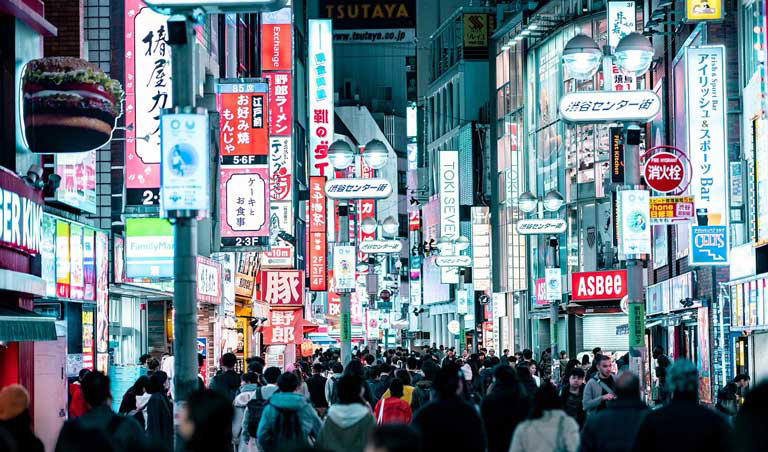
- Election 2024
- Entertainment
- Newsletters
- Photography
- Personal Finance
- AP Investigations
- AP Buyline Personal Finance
- AP Buyline Shopping
- Press Releases
- Israel-Hamas War
- Russia-Ukraine War
- Global elections
- Asia Pacific
- Latin America
- Middle East
- Election Results
- Delegate Tracker
- AP & Elections
- Auto Racing
- 2024 Paris Olympic Games
- Movie reviews
- Book reviews
- Personal finance
- Financial Markets
- Business Highlights
- Financial wellness
- Artificial Intelligence
- Social Media
The US ambassador to Japan says boosting arms industry ties is key to a stronger security alliance
In this photo provided by U.S. Embassy in Japan, U.S. Ambassador to Japan, Rahm Emanuel, speaks during his visit to Mitsubishi Heavy Industries’ F-35 fighter jet final assembly and inspection plant in Toyoyama, Aichi prefecture, western Japan, Tuesday, April 16, 2024. (U.S. Embassy via AP)
In this photo provided by U.S. Embassy in Japan, U.S. Ambassador to Japan, Rahm Emanuel, center left, poses with the officials of Mitsubishi Heavy Industries (MHI) and Lockheed, during his visit to a MHI’s F-35 fighter jet final assembly and inspection plant in the town of Toyoyama in the Aichi prefecture, western Japan, Tuesday, April 16, 2024. (U.S. Embassy via AP)
- Copy Link copied
TOKYO (AP) — The U.S. ambassador to Japan urged Tokyo on Tuesday to take a greater role in developing, producing and supplying weapons “to enhance our collective security” amid conflict in Ukraine, Gaza and elsewhere.
The United States alone can no longer supply all democracies, Ambassador Rahm Emanuel said during a visit to a Mitsubishi Heavy Industries’ F-35 fighter jet factory. He stressed the importance of stronger defense industry cooperation between the allies.
The visit came after Prime Minister Fumio Kishida’s trip to Washington, where he met with President Joe Biden and highlighted Japan’s commitment to do more as a reliable partner, especially in defense cooperation.
The countries will now look at what Japan can co-license, co-produce and co-develop, Emanuel told reporters. “It’s extremely exciting to bring Japan’s industrial capability, its engineering smarts, onto the field on behalf of the alliance,” he said.
Japan, due to its wartime past as aggressor, had long banned most arms exports, a principle that left its defense industry with high prices, aging technology and scant government support. A number of Japanese arms makers left the business.
But under the national security strategy that Kishida’s government adopted in 2022, Japan is accelerating its military buildup and increasing its defense budget in the face of threats from China, North Korea and Russia. Japan pledged to acquire what it calls counter-strike capability and purchased 400 Tomahawk long-range cruise missiles.
Japan also has stepped up support for its defense industry and drastically eased arms export rules. It allowed the sale of lethal weapons to countries from which they were licensed and the overseas sales of a fighter jet it is developing with Britain and Italy. The changes have allowed Japan to ship Japanese-made PAC-3 missiles to the U.S. to help replace those contributed by Washington to Ukraine.
According to the Stockholm International Peace Research Institute’s latest report in December, only four Japanese arms manufacturers ranked among the top 100 global companies. Japan also ranked among top arms importers, mostly of costly U.S. arsenals.
But Japanese firms including Mitsubishi Heavy say they expect the country’s recent shift will bring significant growth to the industry.
Many U.S. allies have been increasing defense budgets and capabilities following Russia’s invasion of Ukraine and the Hamas attack on Israel. To meet obligations of security, defense and deterrence, “we cannot afford for Japan to be on the sidelines,” the U.S. ambassador said.
Mitsubishi Heavy’s F-35 final assembly and checkout plant near Nagoya produces six of the Lockheed Martin Corp.’s F-35 jets a year and provides maintenance work for those deployed in Japan. The ambassador called the F-35 “the most modern and capable jet we have in our collective defense and deterrence industries.”
Areas of potential cooperation will be discussed at a military industry council and reported to foreign and defense ministers in both countries, Emanuel said.
128 episodes
The world is a book and if you are missing out on any of its chapters (countries), we could help you with an epic journey around the world with our Travel. Explore. Celebrate Life Podcast! Hosted by the dynamic duo, Neil Patil and Sunila Patil, alongside surprise guests who bring an intriguing stories across the episodes. So be ready to set across India and beyond, diving headfirst into vibrant cultures, tantalizing cuisines, and awe-inspiring adventures. From navigating hidden gems to savoring local delicacies, we're your ultimate travel buddies, dishing out insider tips to make you smart traveller. So, toss those worries aside and say - Chalo Bag Bharo Nikal Pado! Fresh episode drops every Tuesday. This Podcast is brought to you by - veenaworld.com
Travel. Explore. Celebrate Life Podcast with Neil and Sunila Patil Veena World
- Society & Culture
- APR 23, 2024
Lofoten Islands: Exploring Norway's Jewel | Travel Podcast by Veena World
This week, Neil and Sunila dive into the allure of Lofoten Islands, Norway, uncovering its magnetic charm and why it's the ultimate destination for witnessing the Northern Lights in 2024. Sunila shares her firsthand experiences, from the iconic red houses to the mesmerizing landscapes that define Lofoten's beauty. Delve into the culinary delights, including the unique stockfish, and embark on thrilling adventures such as rib boat eagle safaris and tranquil fjord cruises. Explore the Icelandic horse stables with beachside saunas, and check out the age-old viking home musuem. Join the journey through Viking land and beyond in this captivating episode! If you like this episode, check out our other interesting episodes on Tokyo Traveller's Toolkit: Neighbourhoods, Cuisine, and Crossings; Amsterdam Revealed: Canals, Tulips, Bicycles, and Beyond; Interlaken - Switzerland's Adventure Destination and much more! Get in touch with our hosts on their socials: Neil Patil: Twitter, Instagram and Linkedin Sunila Patil: Twitter, Instagram and Linkedin The Midnight Sun season has started in Norway, Let us take you there! Don’t miss the latest episode by following us on your preferred podcast listening platform - YouTube, Spotify, Apple Podcasts, a href="https://podcasts.google.com/feed/aHR0cHM6Ly93d3cuc3ByZWFrZXIuY29tL3Nob3cvNDczNjc4MC9lcGlzb2Rlcy9mZWVk" target="_blank" rel="noreferrer...
- APR 16, 2024
Tokyo Traveller's Toolkit: Neighbourhoods, Cuisine, and Crossings | Travel Podcast by Veena World
Join hosts Neil and Sunila as they uncover Tokyo's charms, from iconic neighbourhoods like Shibuya to hidden culinary gems. Learn insider tips on exploring each area, marvel at Tokyo's skyline from towering landmarks, and hear the legendary tale of Hachikō Dog. Discover the truth about vegetarian food options and the best time to see cherry blossoms. Tune in for an extraordinary tour of Japan's captivating capital! If you like this episode, check out our other interesting episodes on Amsterdam Revealed: Canals, Tulips, Bicycles, and Beyond, Interlaken - Switzerland's Adventure Destination, Vivid Sydney with Neil Patil & Sunila Patil and much more! Get in touch with our hosts on their socials: Neil Patil: Twitter, Instagram and Linkedin Sunila Patil: Twitter, Instagram and Linkedin Tokyo Travel Season is here, check it out here on our website Don’t miss the latest episode by following us on your preferred podcast listening platform - YouTube, Spotify, Apple Podcasts, Google Podcasts, Amazon Music, JioSaavn, and Wynk.
- APR 5, 2024
Amsterdam Revealed: Canals, Tulips, Bicycles, and Beyond | Travel Podcast by Veena World
Uncover the allure of Amsterdam in our latest podcast episode! From the iconic canals that crisscross the city to the vibrant tulip season that paints it in colorful hues, Neil and Sunila explore the essence of Amsterdam's charm. Discover why Dutch bicycles reign supreme as the preferred mode of transport and why summers are the perfect season to visit. Venture into the miniature wonderland of Madurodam and unravel the mystery behind the plethora of museums that dot the Dutch landscape. And of course, no exploration of Amsterdam is complete without a tantalizing taste of its renowned cuisine, from flavourful beers to delectable cheeses. Join us on a journey through the heart of Amsterdam's culture, history, and culinary delights! If you like this episode, check out our other interesting episodes on Interlaken - Switzerland's Adventure Destination, Vivid Sydney with Neil Patil & Sunila Patil and much more! Get in touch with our hosts on their socials: Neil Patil: Twitter, Instagram and Linkedin Sunila Patil: Twitter, Instagram and Linkedin Check out our website for all your travel solution - Veenaworld.com Don’t miss the latest episode by following us on your preferred podcast listening platform - YouTube, Spotify, Apple Podcasts, Google Podcasts, Amazon Music, JioSaavn, and Wynk.
- MAR 29, 2024
Interlaken - Switzerland's Adventure Destination
In this exciting episode, Veena World's Neil Patil and Sunila Patil take you on a thrilling journey to Interlaken – the adventure destination of Switzerland! Discover why Interlaken is a paradise for adventure enthusiasts, with its stunning landscapes, thrilling activities, and charming Swiss culture. This is an episode you don't want to miss!
- MAR 26, 2024
Pick the right shoes before your trip
Today's Wednesday Short is about Shoes! They can definitely make or break your trip. Find out why...
- MAR 23, 2024
What is Dharamshala's Connection with Tibet & His Holiness the Dalai Lama?
Dharamshala's appeal extends far beyond its geographical location. Rather, this place is a unique cultural melting pot where Tibetan, Himachali and British influences converge. So why is that? Let's answer that today.
- © Copyright Veena World
Top Podcasts In Society & Culture
You might also like.

IMAGES
VIDEO
COMMENTS
U.S. citizens needing urgent assistance should contact us by using our inquiry form or phone (03-3224-5000). If you need after-hours assistance in an emergency, please call 03-3224-5000 and ask to speak with the Embassy's duty officer. Emergency Contact Information for U.S. citizens.
Travel Advisory Level 1: Exercise Normal Caution Travel Advisory Level 1: ... Rahm Emanuel was confirmed in a bipartisan vote as the 31st United States Ambassador to Japan on December 18, 2021. ... "American View" is the official magazine of the Embassy of the United States in Tokyo. GO TO SITE.
U.S. News Insider Tip: Take a 20-minute walk northwest of Ueno Park to the more than 100,000-square-foot Yanaka Cemetery, the first public burial ground in Tokyo and an oasis of foliage and ...
Japan's capital and largest city. Tokyo (東京, Tōkyō) is Japan's capital and the world's most populous metropolis. It is also one of Japan's 47 prefectures, consisting of 23 central city wards and multiple cities, towns and villages west of the city center. The Izu and Ogasawara Islands are also part of Tokyo. Prior to 1868, Tokyo was ...
Tokyo (東京, Tōkyō) is the nation's capital, the site of the 2020 Summer Olympics and the most populous city in the world - there's no shortage of places to see and things to do in Tokyo. While that means you'll inevitably have to leave some things off your itinerary, it also means that there's something for everyone. Tokyo's center, the 23 wards, combine some of the world's ...
Tokyo Travel Guide Japan #1 in Best ... Most of the rolls in the United States are American versions of sushi. Here, some of the most popular sushi is various cuts of fish placed on top of rice; ...
The Government of Japan has announced that as of November 8, 2021, fully vaccinated business travelers may be able to travel to Japan and will be eligible for a reduced, three-day quarantine period. Currently recognized vaccines in Japan include Pfizer, Moderna, or AstraZeneca COVID-19 vaccines. Details of the new policy are likely to change ...
Dengama. 12:30 p.m. Shop for knives, bowls and chopsticks. Jump on the Oedo line and switch to the Ginza line at Ueno-okachimachi station and head for Kappa Bashi, Tokyo's kitchenware district ...
Call us in Washington, D.C. at 1-888-407-4747 (toll-free in the United States and Canada) or 1-202-501-4444 (from all other countries) from 8:00 a.m. to 8:00 p.m., Eastern Standard Time, Monday through Friday (except U.S. federal holidays). See the State Department's travel website for the Worldwide Caution and Travel Advisories.
Tourism volume is estimated based on in-market destination search query interest from Google and on travel.usnews.com in 2015-2016. Hotel prices are sourced from a sample of U.S. News Best Hotels ...
Visa Waiver Program. The Visa Waiver Program (VWP) enables nationals of certain countries to travel to the United States for tourism or business (visitor visa purposes) for stays of 90 days or less without obtaining a visa. Not all countries participate in the VWP, and not all travelers from VWP countries are eligible to use the program.
It's a Japanese specialty where the cold noodles are served in a bowl separate from the warm broth. You dip the cold noodles in the broth and then you reach ramen Nirvana. It's all part of the experience. The best tsukemen I had was at Fuunji, followed closely by Rokurinsha on Ramen Street in Tokyo Station.
Tokyo Travel Guide. Last Updated: February 18, 2024. Tokyo is a crazy, frenetic, eclectic, and astounding city. It marries traditional tastes, unique fashion, Western music, avant-garde cocktails, and delicious food to create a place that is incredibly cool and weird. It comes alive at night, when the neon billboards and bright lights turn on ...
Follow Embassy Tokyo's American Citizen Services section on Facebook and Twitter. Review the Country Security Report for Japan. Visit the CDC page for the latest Travel Health Information related to your travel. Prepare a contingency plan for emergency situations. Review the Traveler's Checklist.
Apply for a U.S. Visa. At this website, you can learn about obtaining a visa, as well as applying for your visa. How to apply for your nonimmigrant visa for travel to the United States. What documents, photos and information you need to apply for your visa. How to access visa application forms and instructions.
People needing consultation services related to COVID-19 vaccines may contact the Tokyo Metropolitan Government COVID-19 Vaccine Side Effects Consultation Center at 03-6258-5802. Assistance: Follow us on Twitter and Facebook . U.S. Embassy Tokyo. Telephone: 03-3224-5000, After-Hours: 03-3224-5000. Email: [email protected].
Tokyo travel: 11 things to know before you go — In 2015, 19.7 million tourists visited Japan. Tokyo's winning bid for the 2020 Olympics is expected to keep that ball rolling.
Everything YOU need to know before you travel to Tokyo Japan. Tokyo is hi-tech and old school at the same time. ancient Shinto shrines next to giant skyscra...
On average, a flight to Tokyo costs $937. The cheapest price found on KAYAK in the last 2 weeks cost $248 and departed from Honolulu. The most popular routes on KAYAK are Honolulu to Tokyo which costs $880 on average, and Los Angeles to Tokyo, which costs $1,016 on average. See prices from:
During the medical exam. The medical examination will include a medical history review, physical examination, and chest X-ray and blood tests (forapplicants 15 years of age or older). The United States also requires tuberculosis (TB) testing for all applicants two years of age and older.
Any traveler to Tokyo usually relies heavily on rechargeable IC cards like Suica and Pasmo, even though multi-day travel passes and single trip paper tickets are also available. Refilling and topping up those cards, let alone purchasing physical tickets, can be a bit burdensome if you lack experience operating the ticket terminals, apps or are hesitant to speak with a ticket agent.
COVID-19 TESTING FOR TRAVEL TO THE UNITED STATES. Starting December 6, all air passengers, regardless of vaccination status, must show a negative COVID-19 test taken no more than 1 day before travel to the United States, regardless of nationality. ... U.S. Embassy Tokyo Telephone: 03-3224-5000, After-Hours: 03-3224-5000 Email: TokyoACS@state ...
Rome2Rio makes travelling from Tokyo to United States easy. Rome2Rio is a door-to-door travel information and booking engine, helping you get to and from any location in the world. Find all the transport options for your trip from Tokyo to United States right here.
Tokyo Itinerary with kids: Day 4. Spend the morning in Odaiba District. See the Rainbow Bridge, Statue of Liberty, and the Gundam Robot. Play at Legoland Discovery Center. Lunch at Tokyo Ramen ...
2 of 2 | . In this photo provided by U.S. Embassy in Japan, U.S. Ambassador to Japan, Rahm Emanuel, center left, poses with the officials of Mitsubishi Heavy Industries (MHI) and Lockheed, during his visit to a MHI's F-35 fighter jet final assembly and inspection plant in the town of Toyoyama in the Aichi prefecture, western Japan, Tuesday, April 16, 2024.
Tokyo Travel Season is here, check it out here on our website ... Join us on a journey through the heart of Amsterdam's culture, history, and culinary delights! If you like this episode, check out our other interesting episodes on Interlaken - Switzerland's Adventure Destination, Vivid Sydney with Neil Patil & Sunila Patil and much more! ...